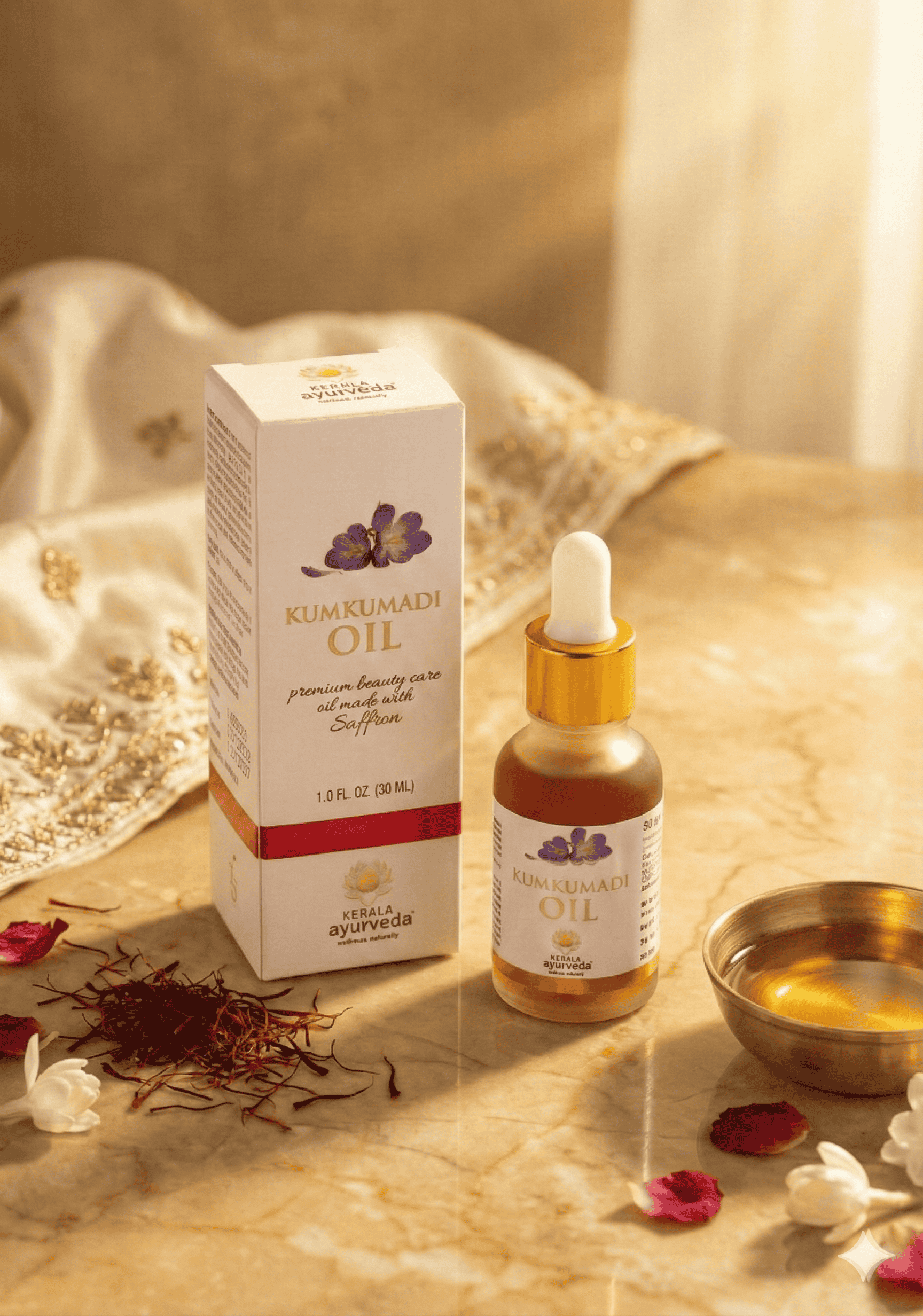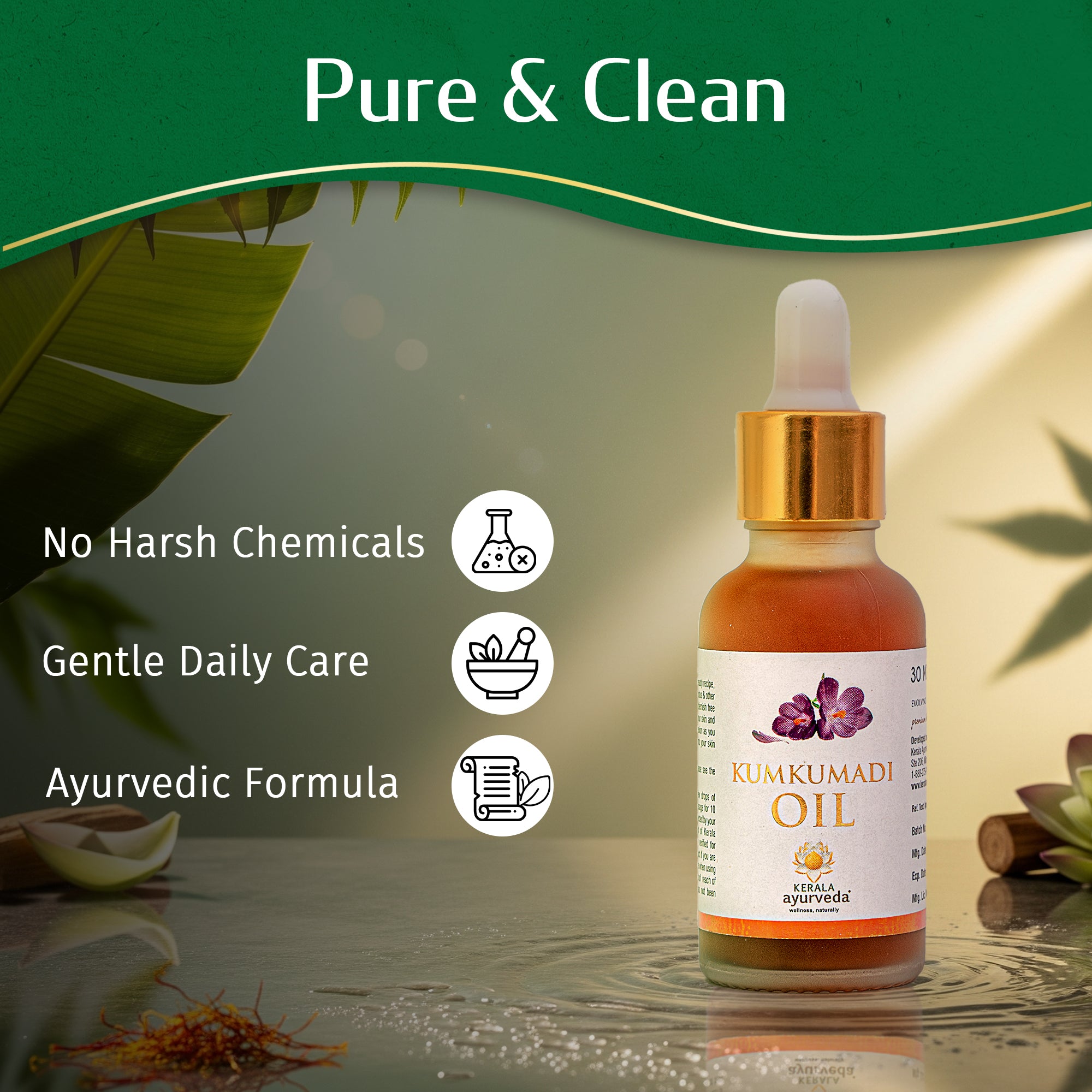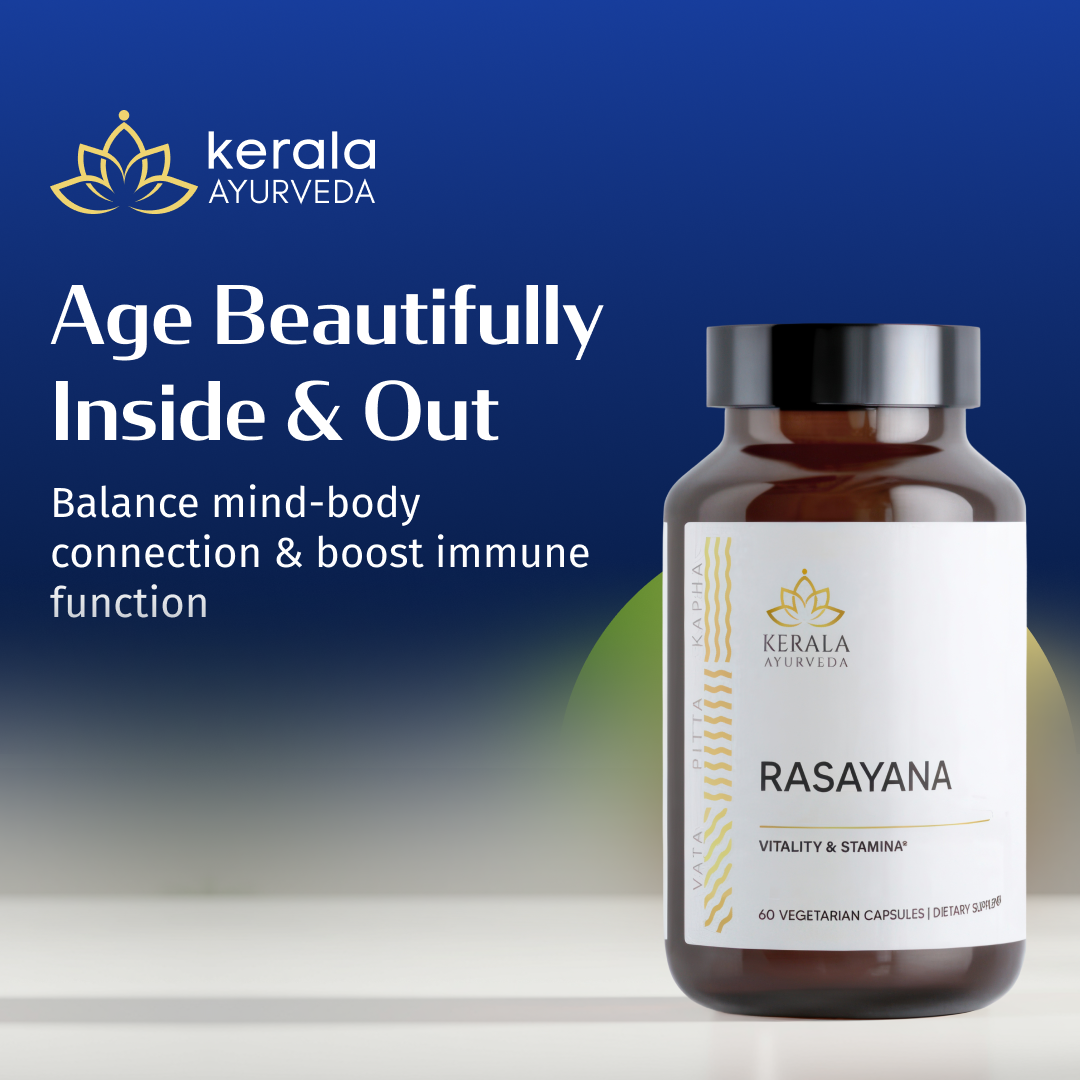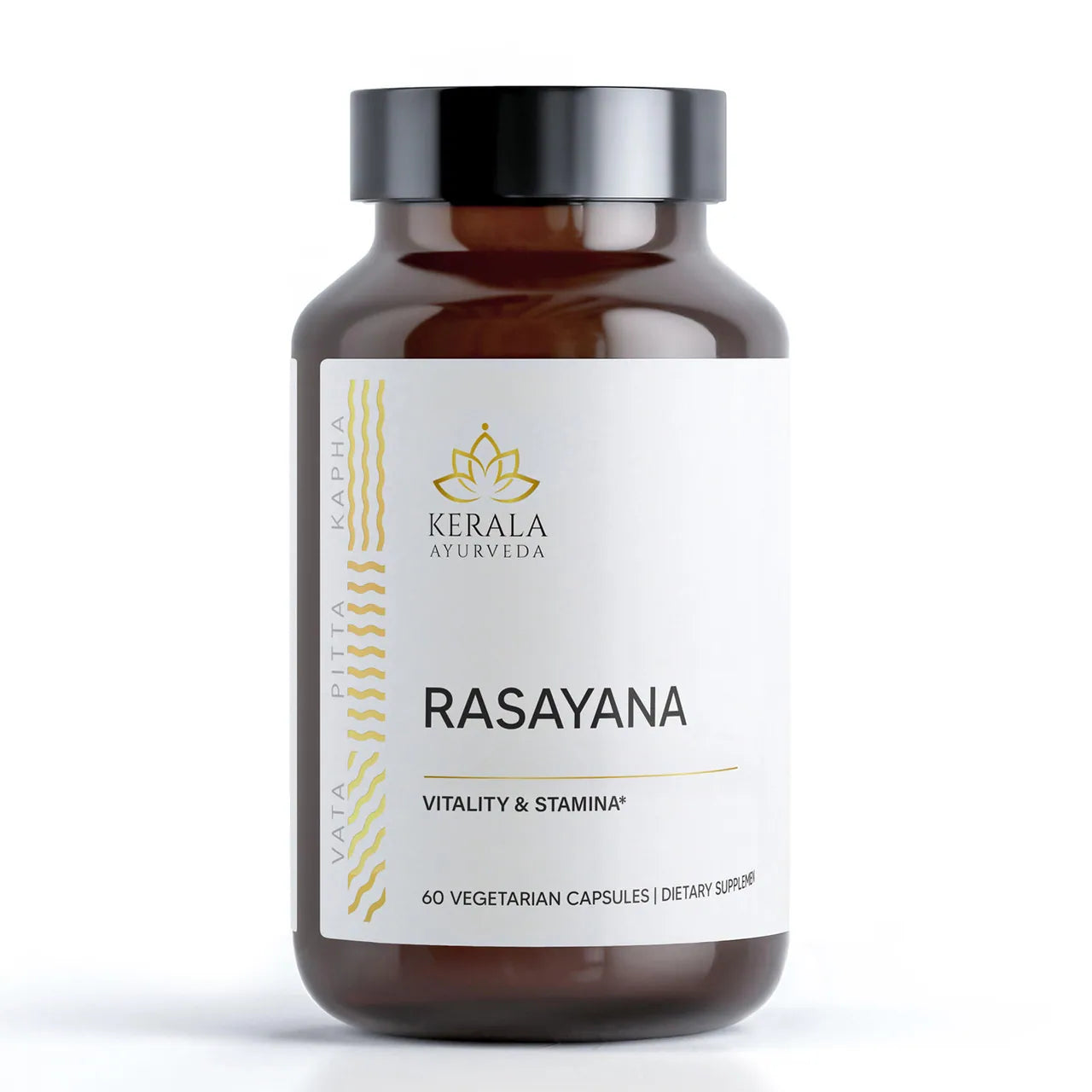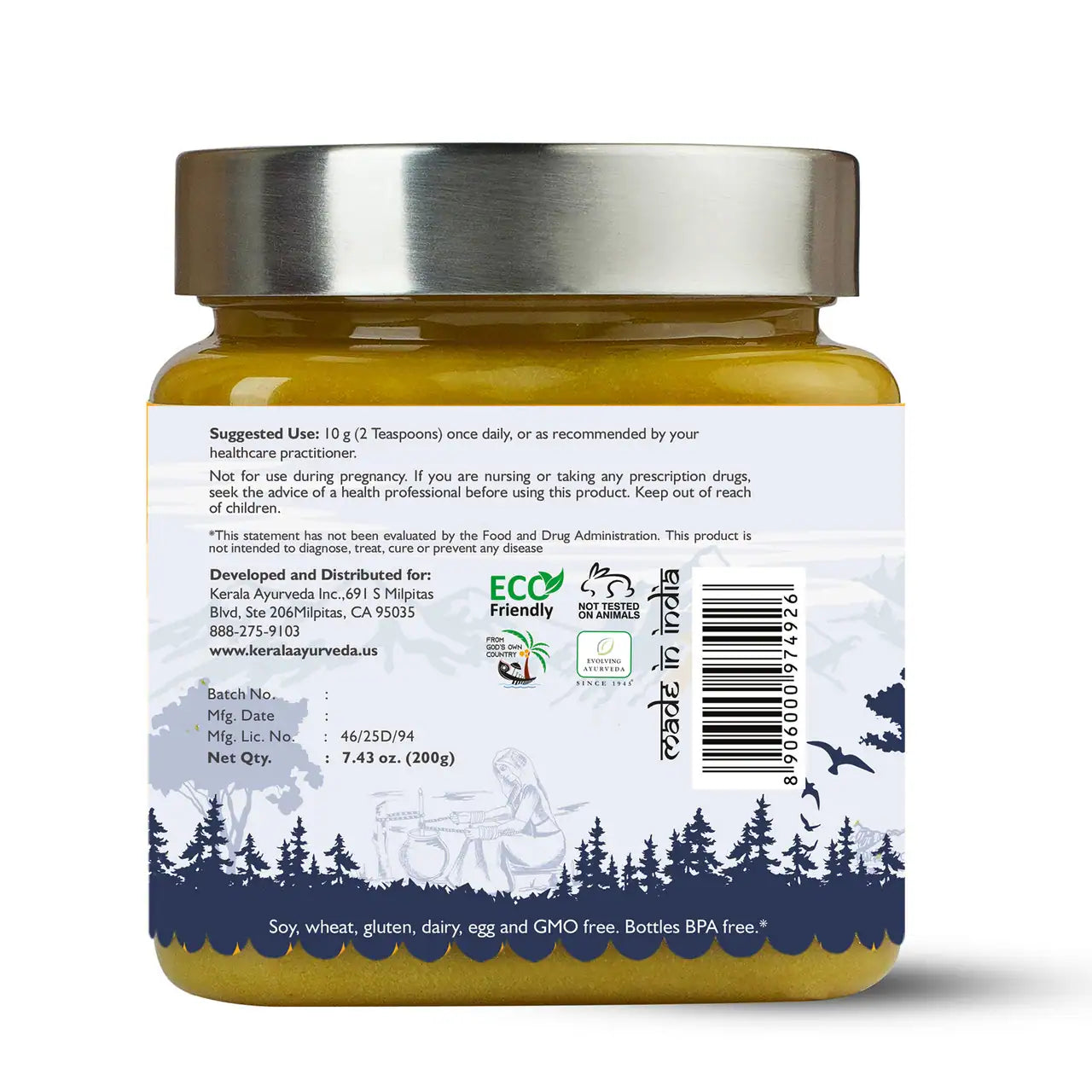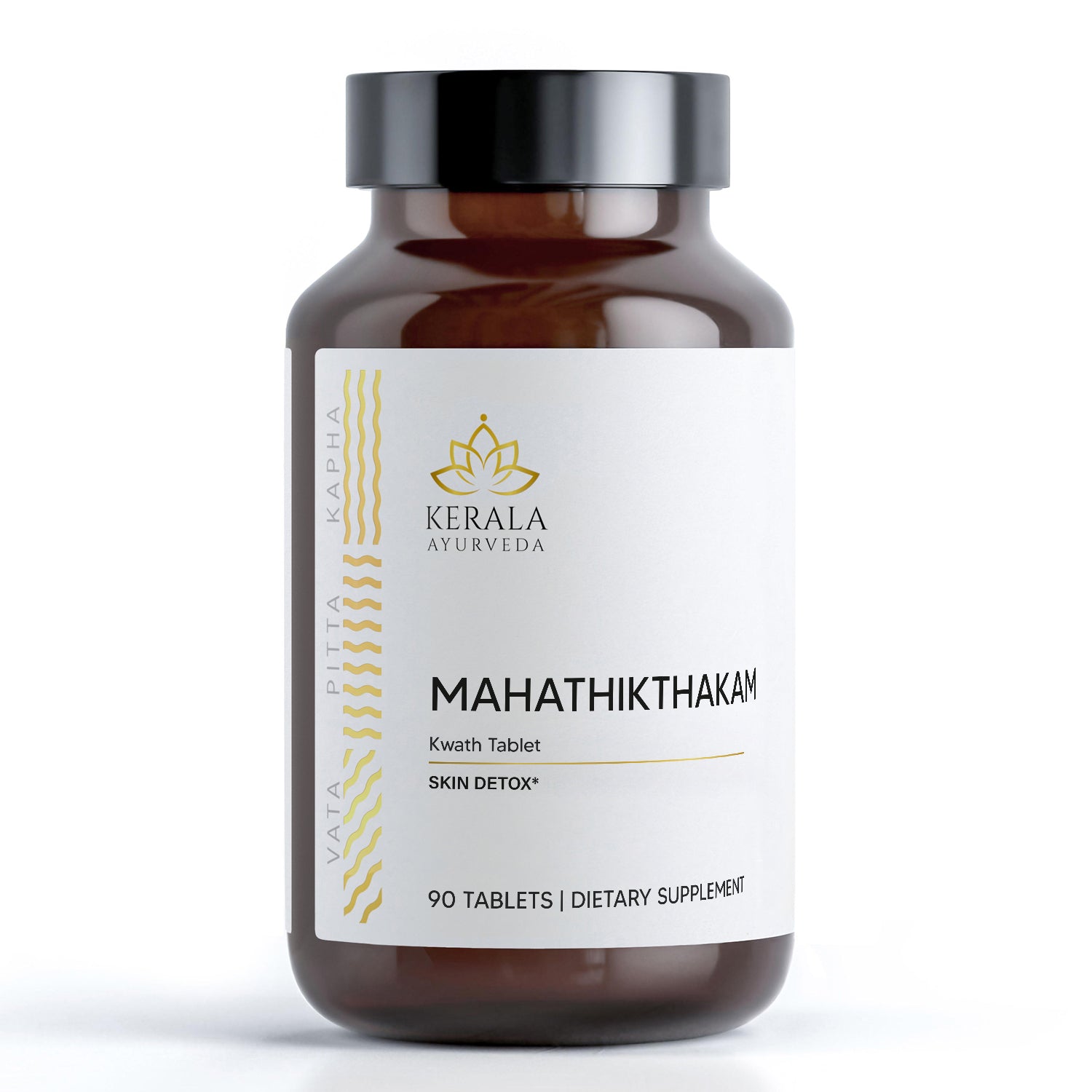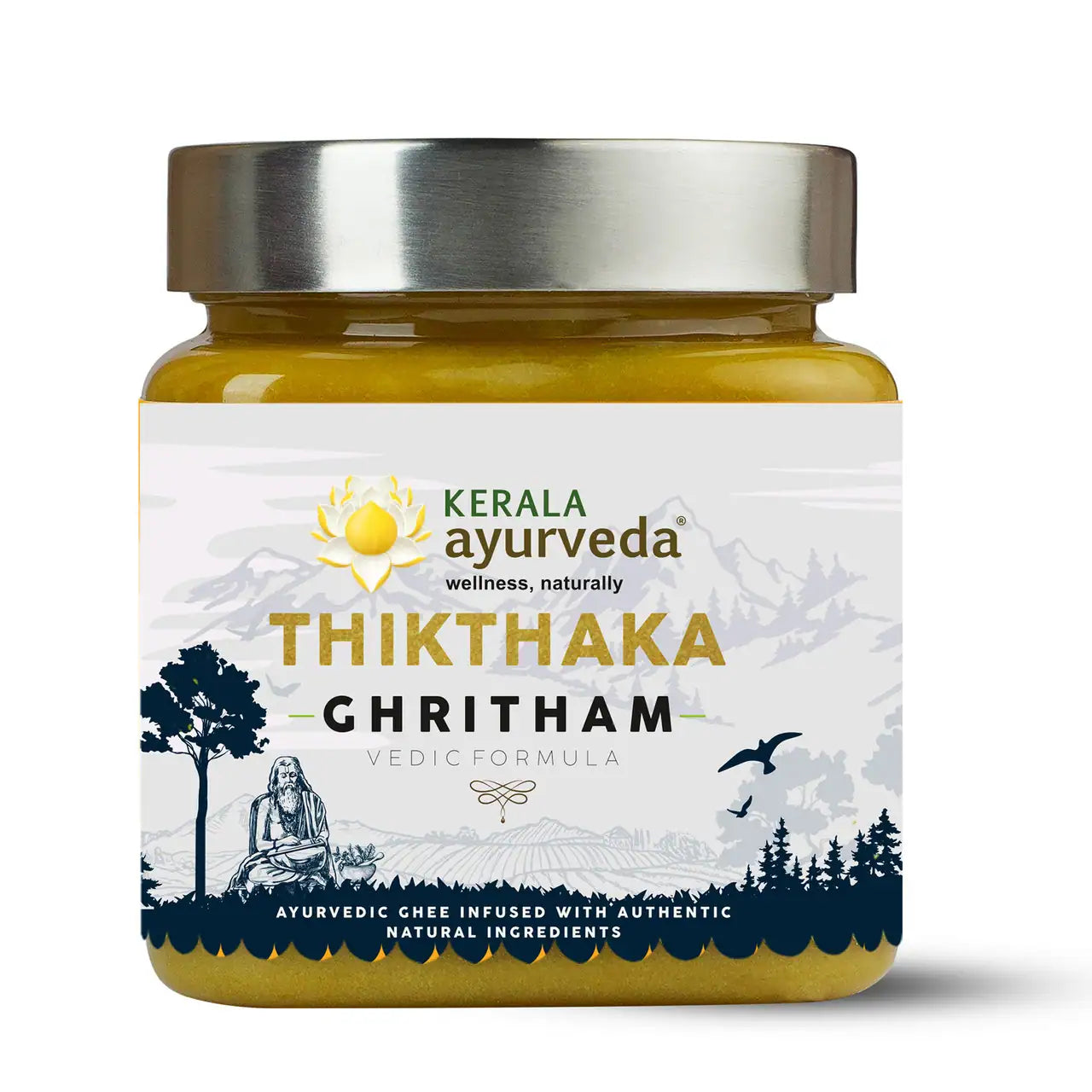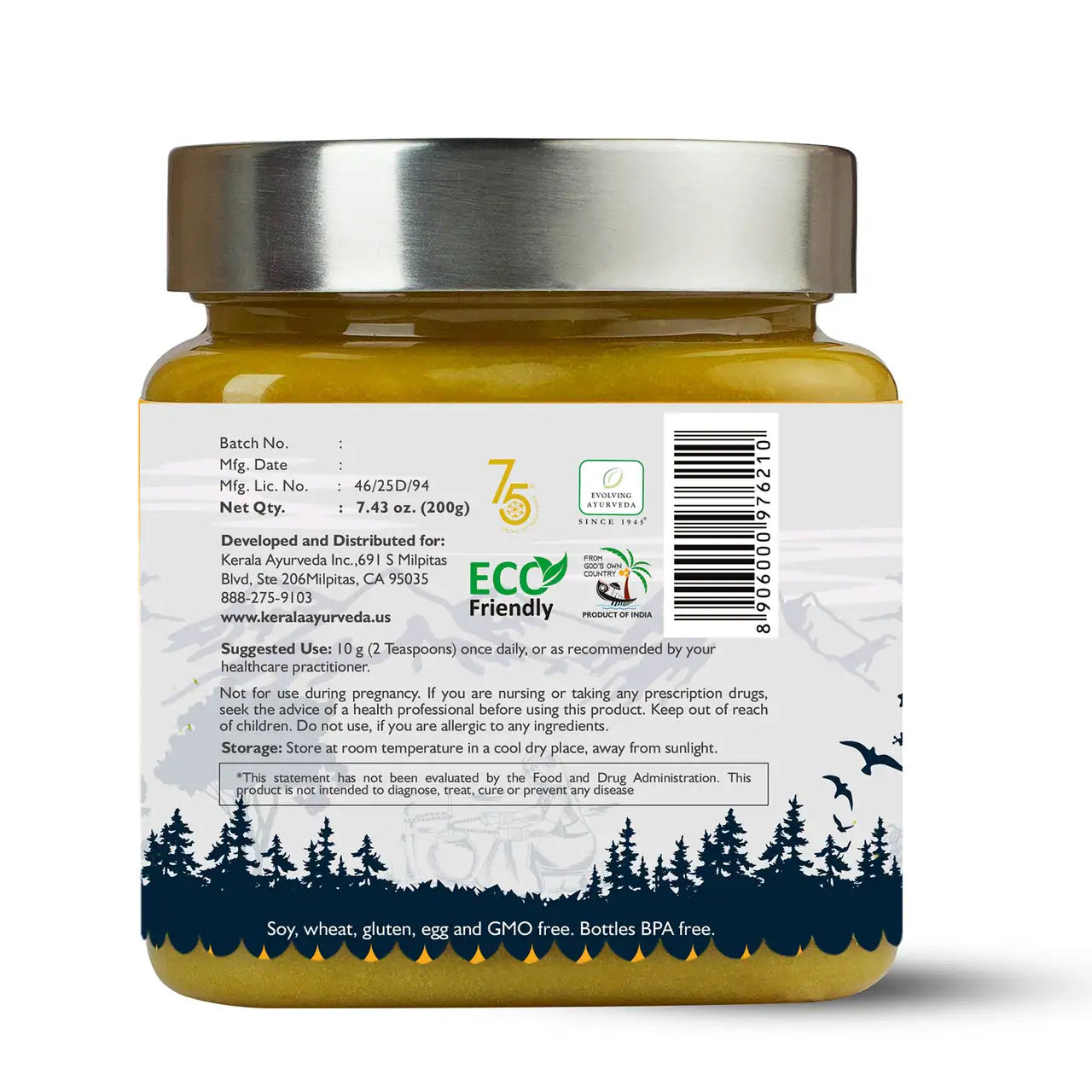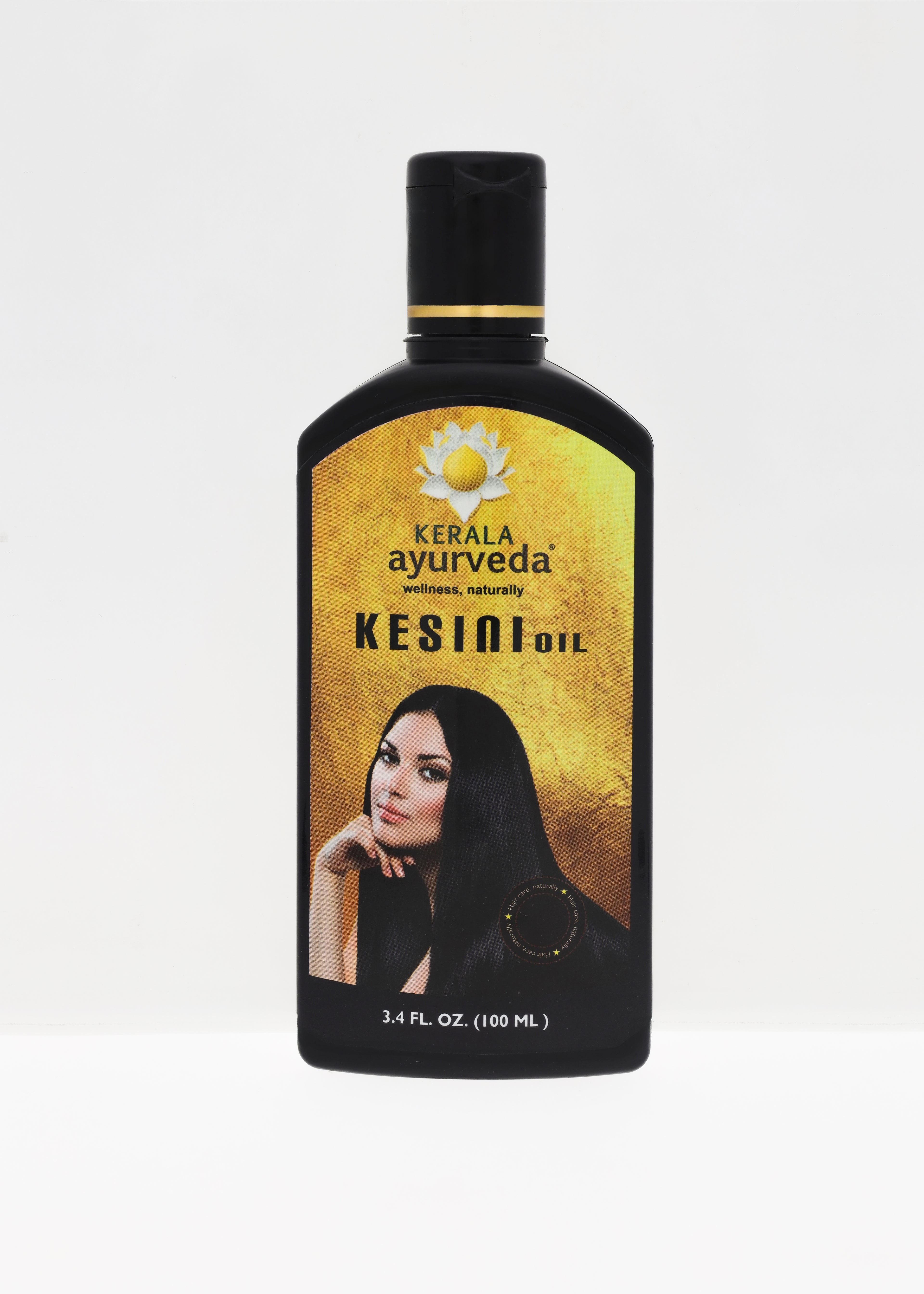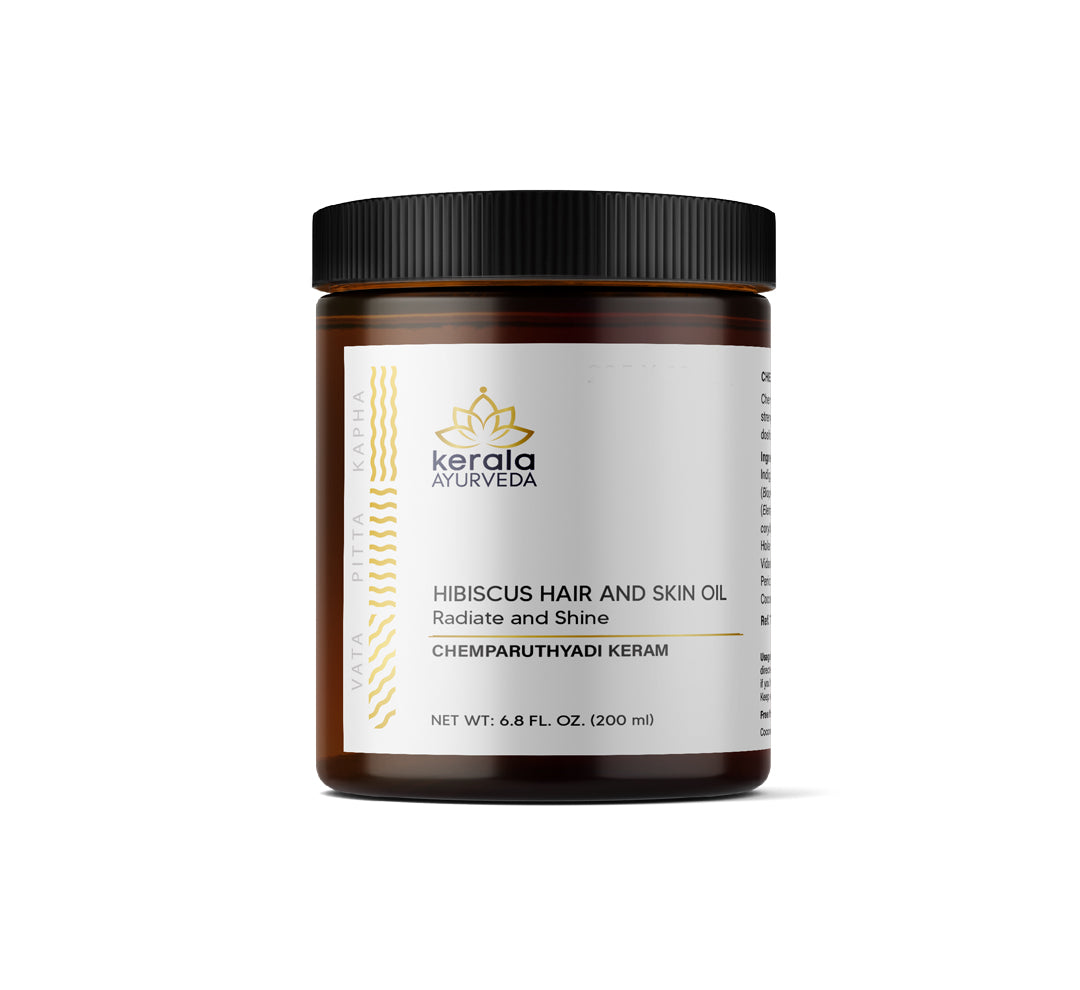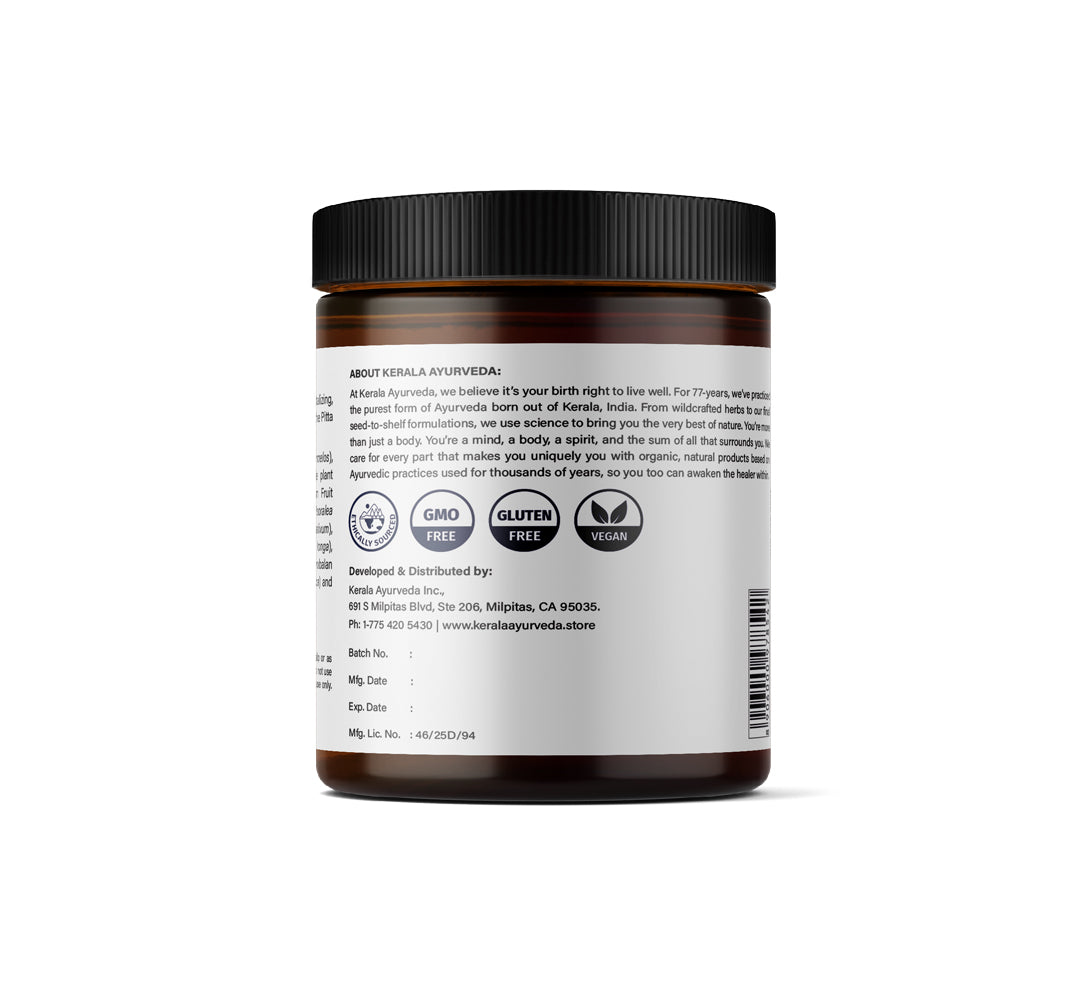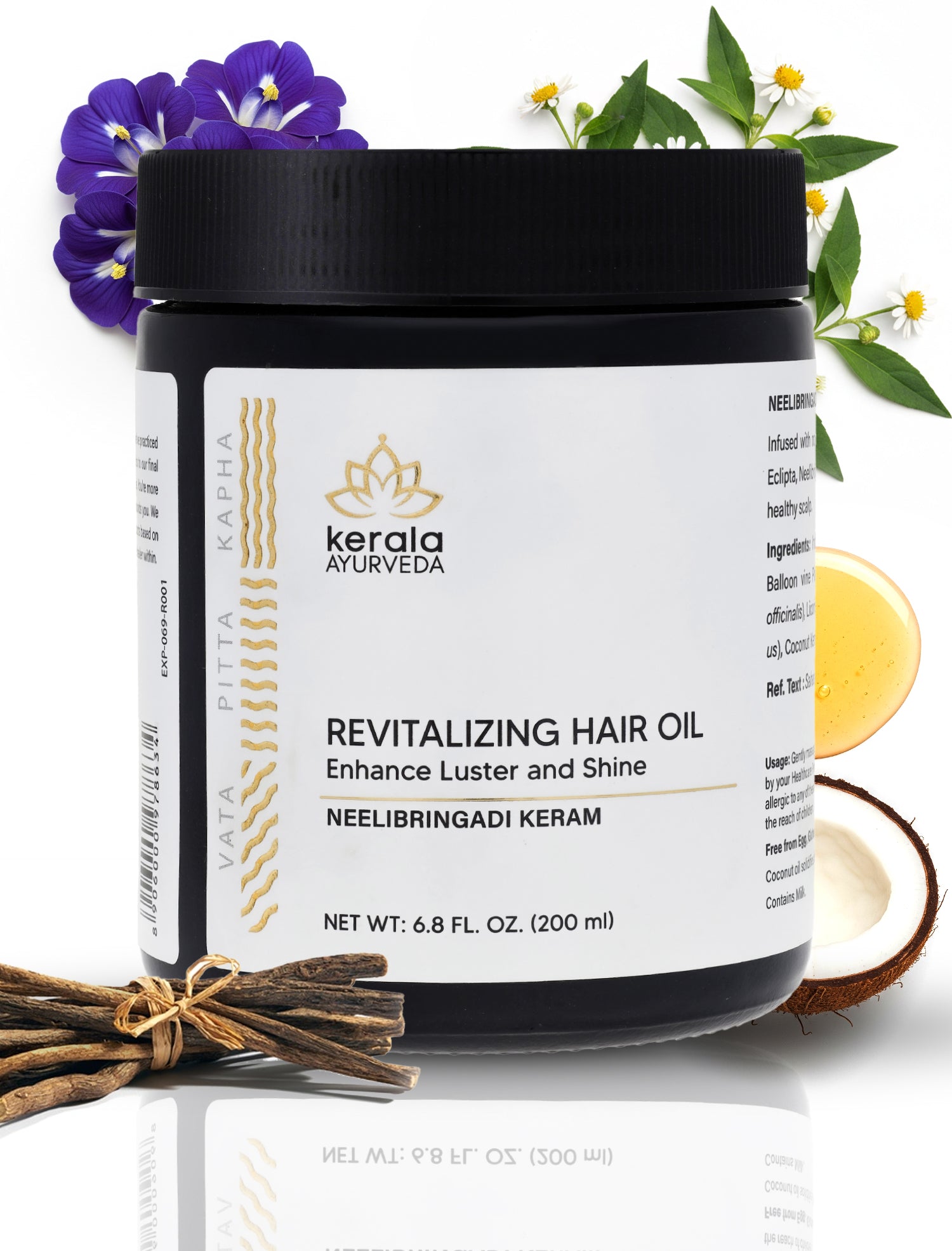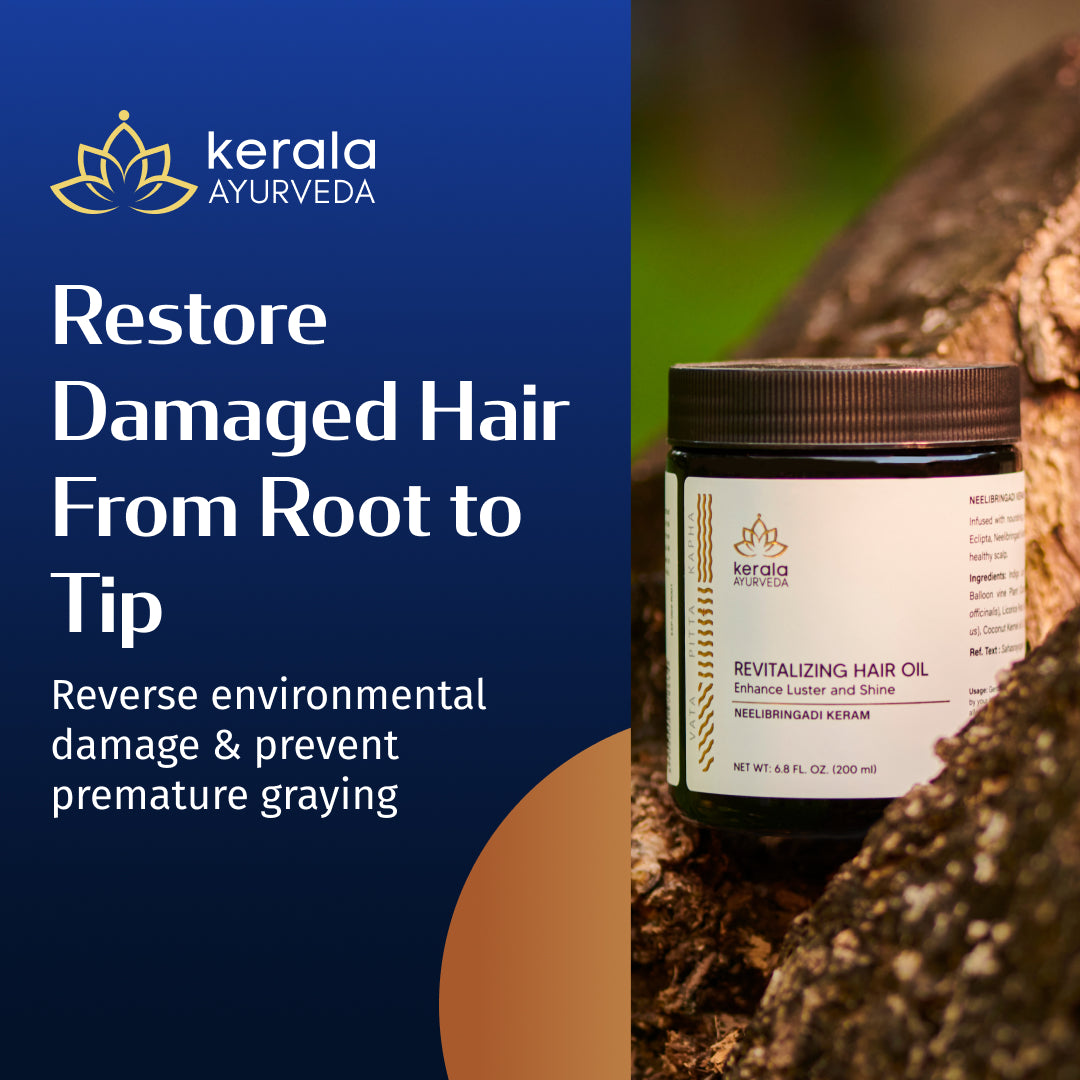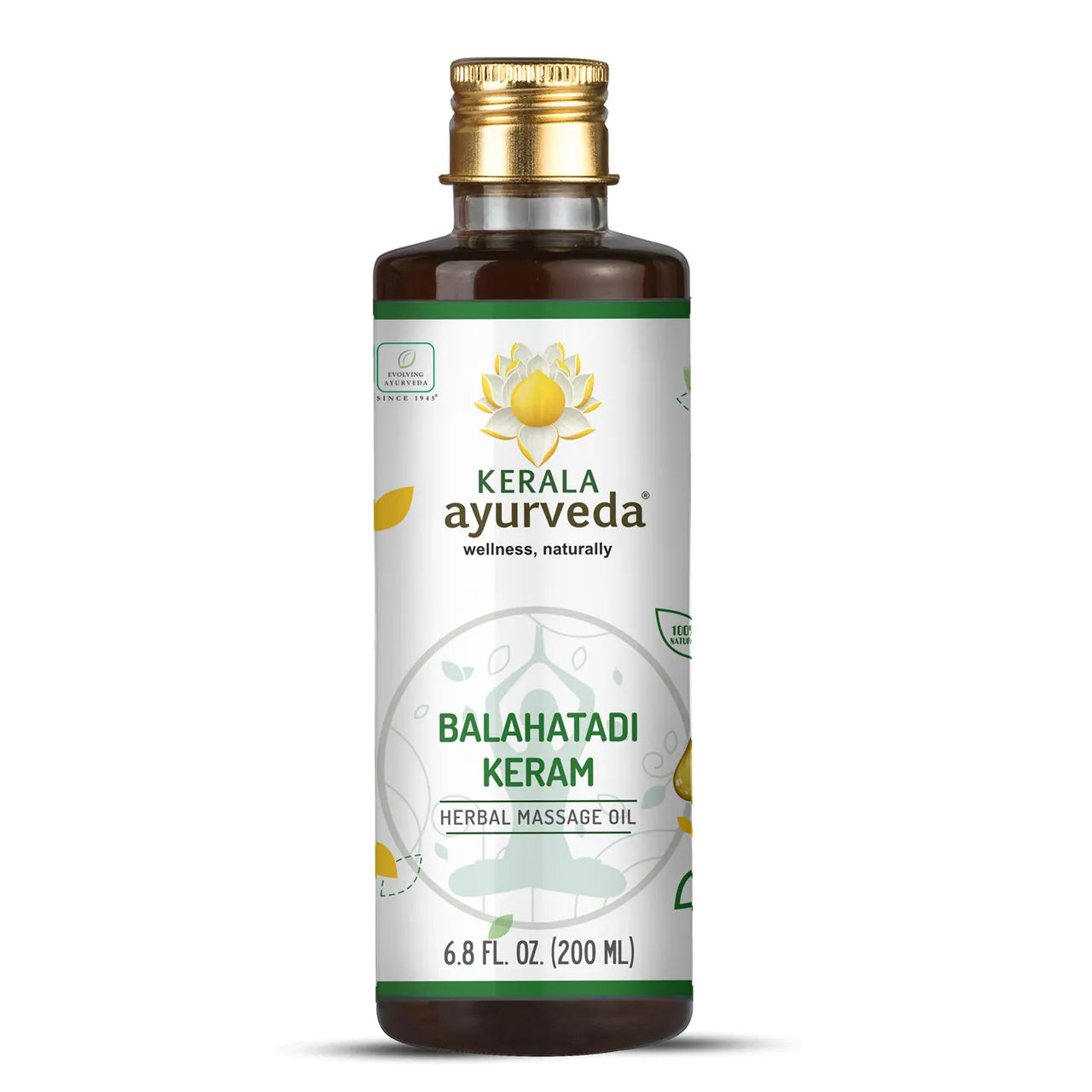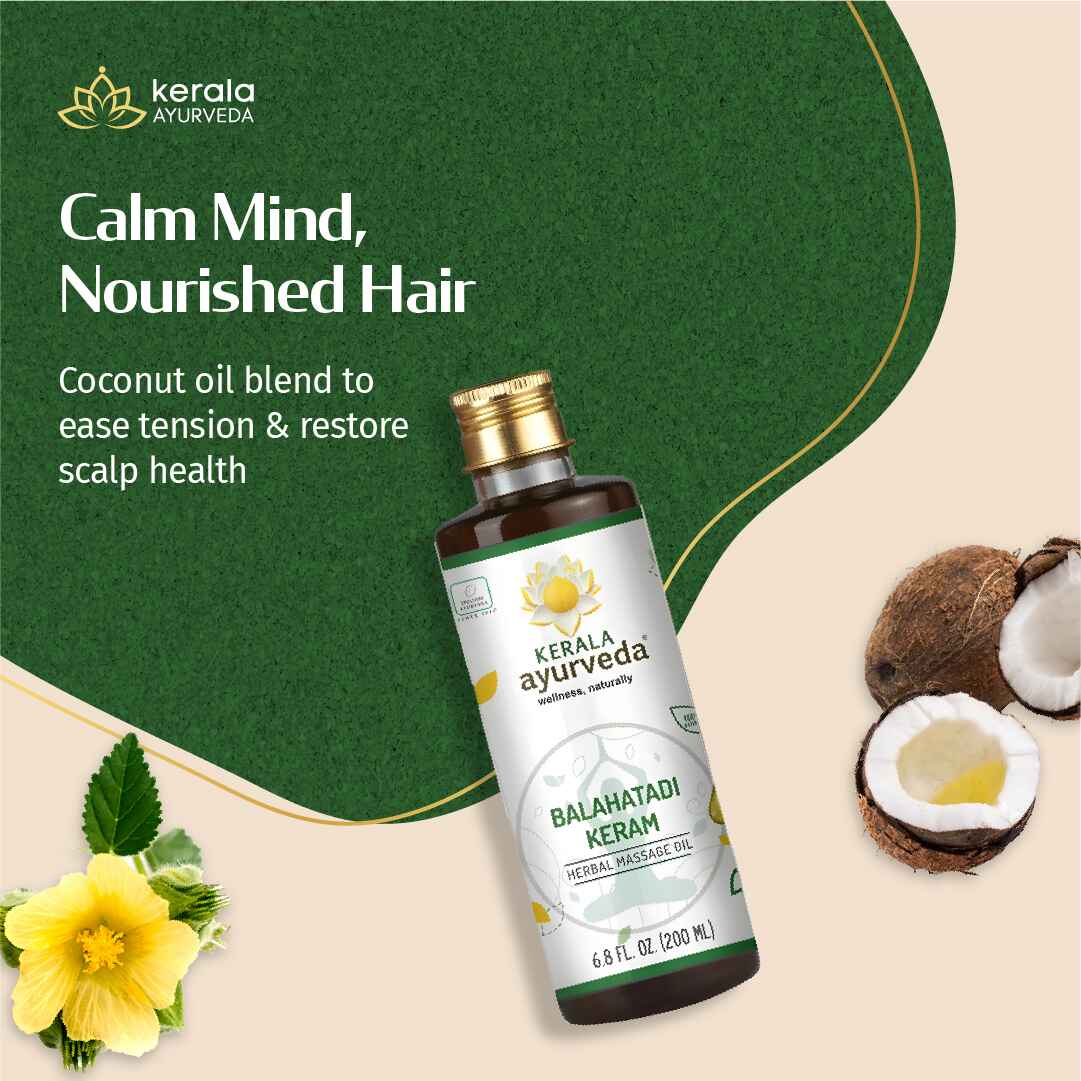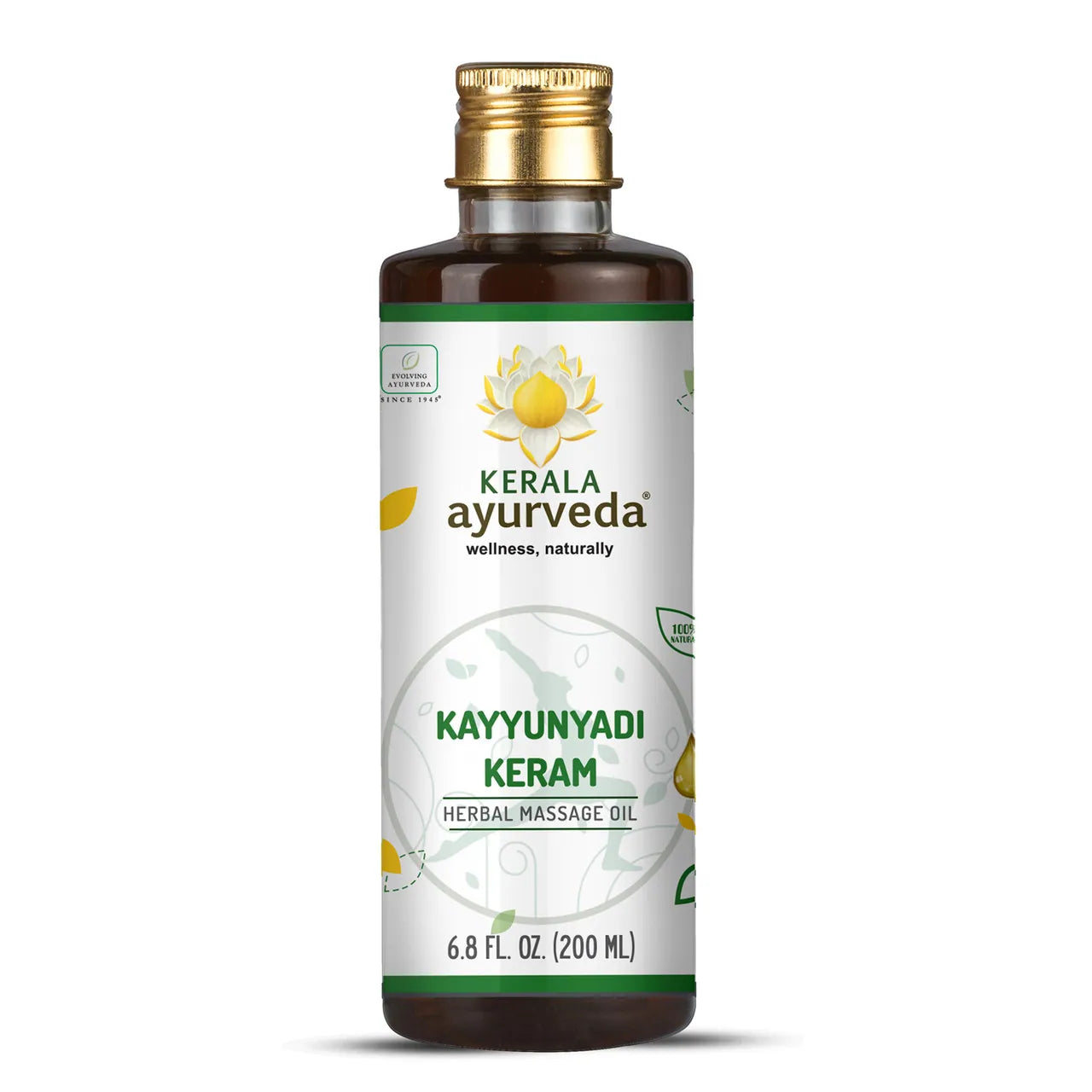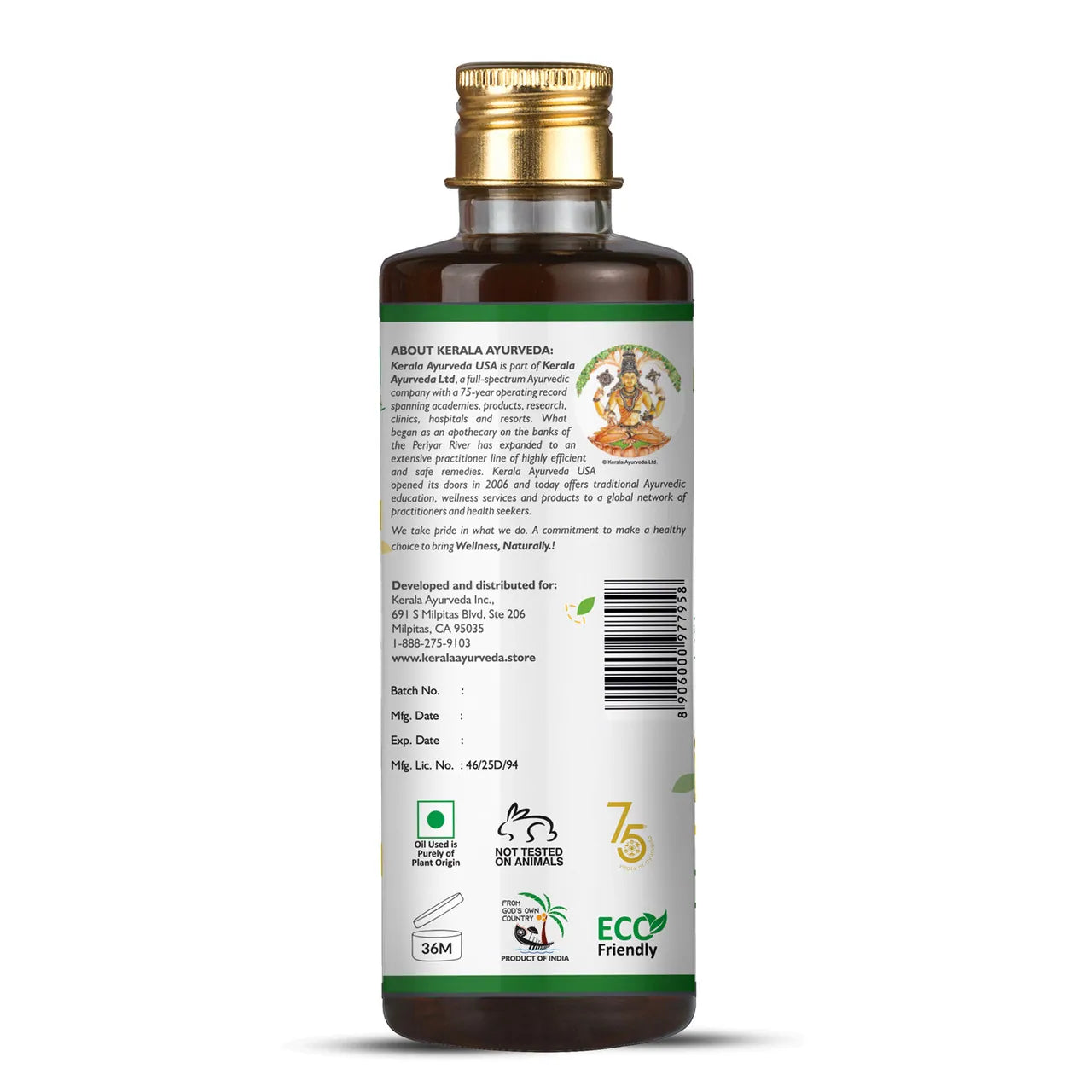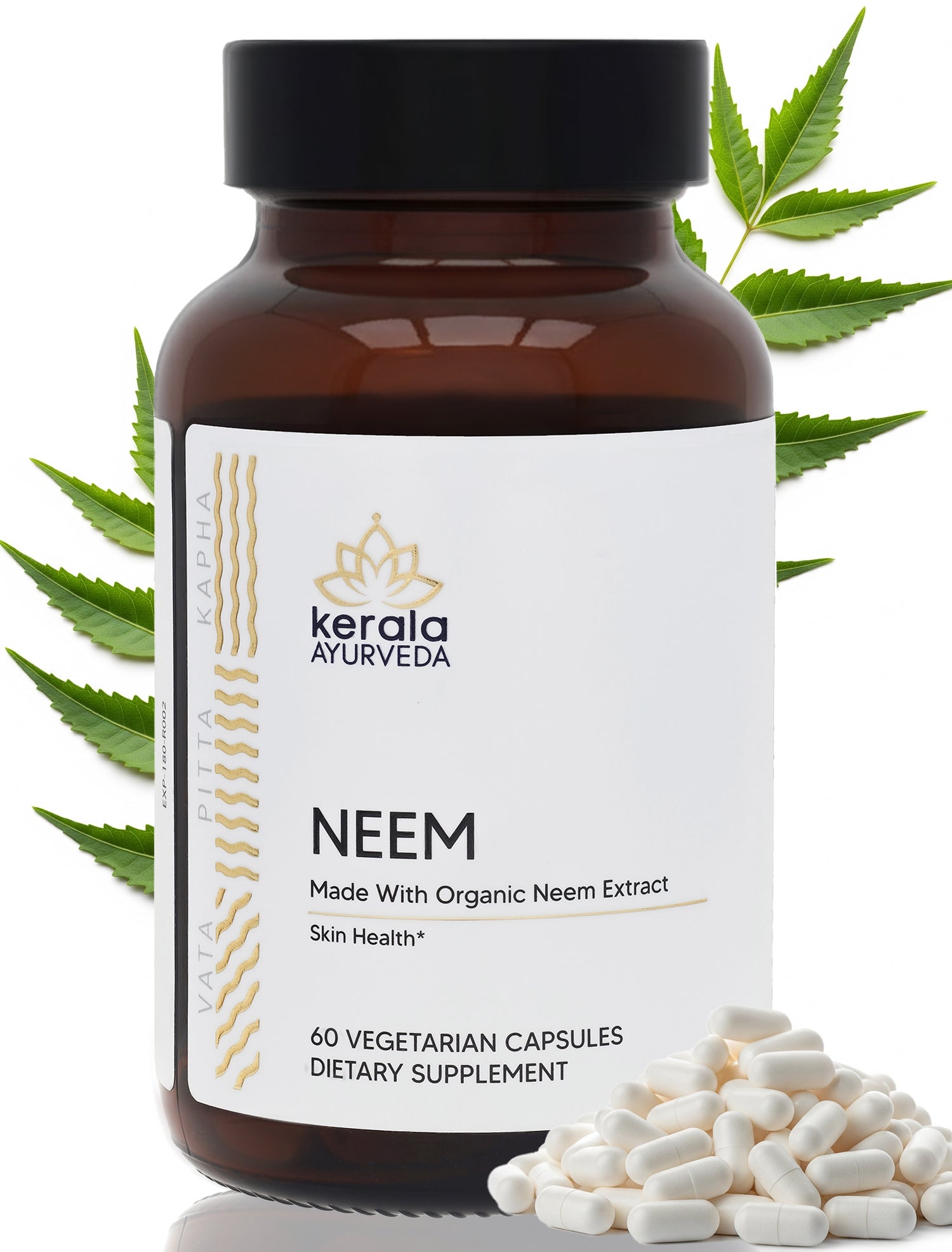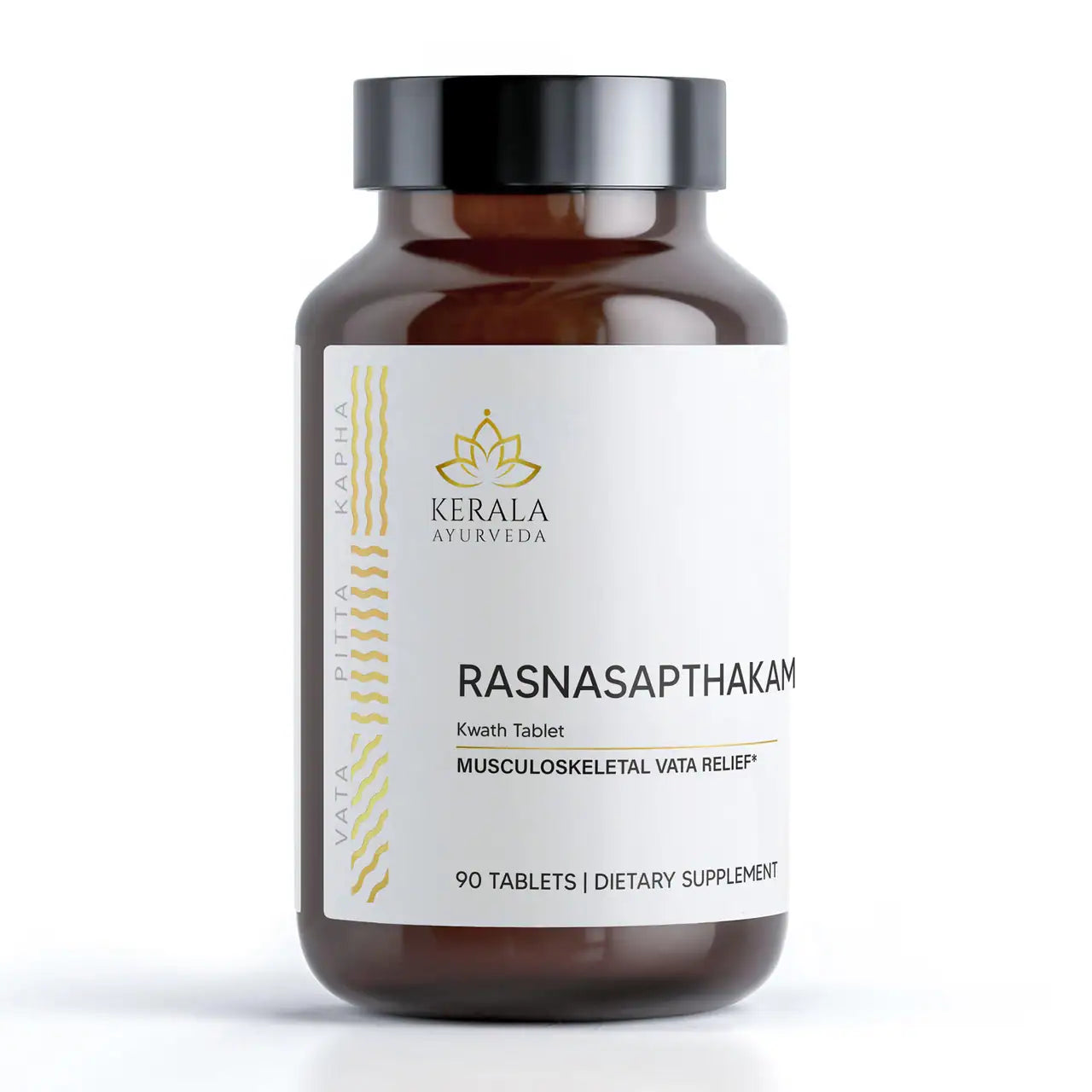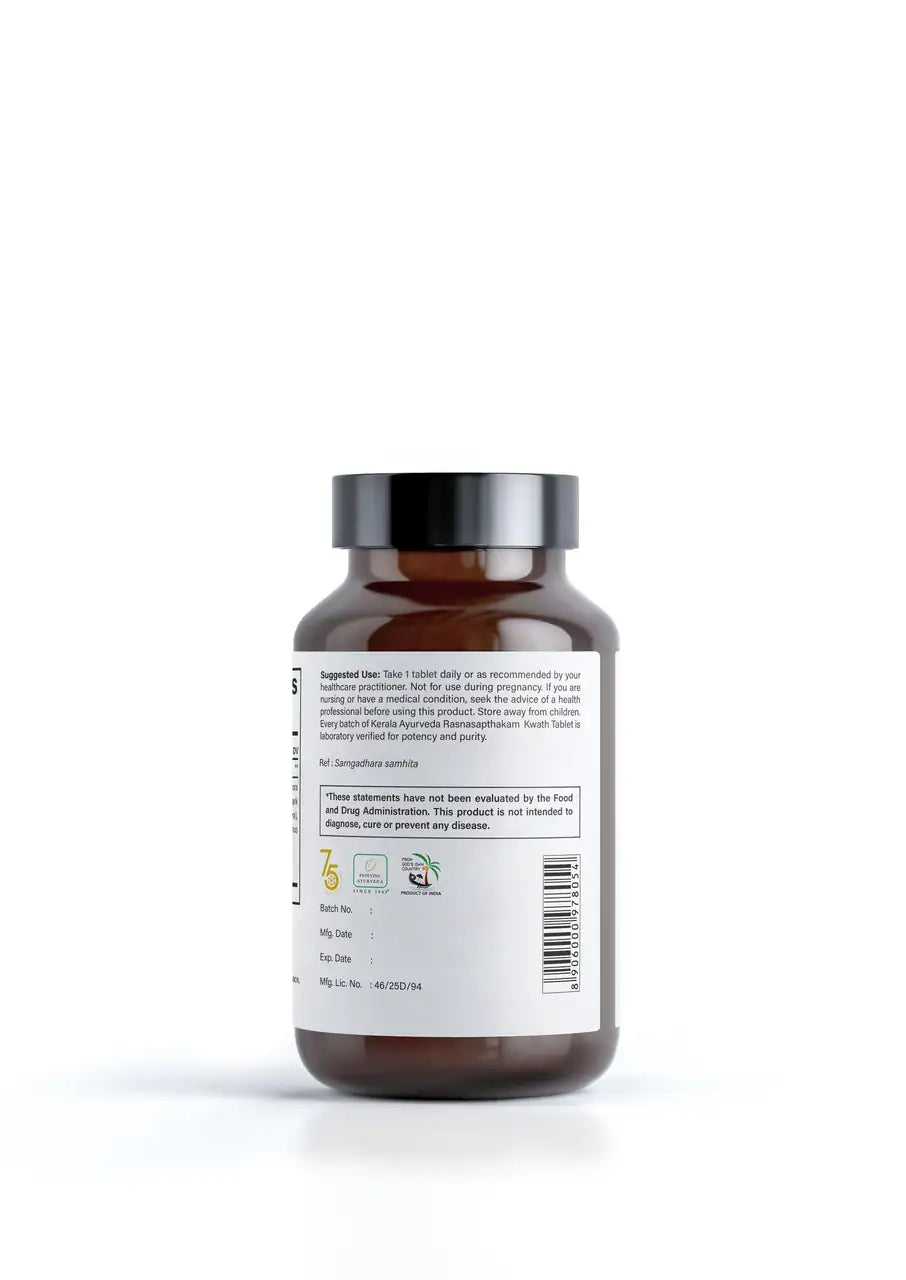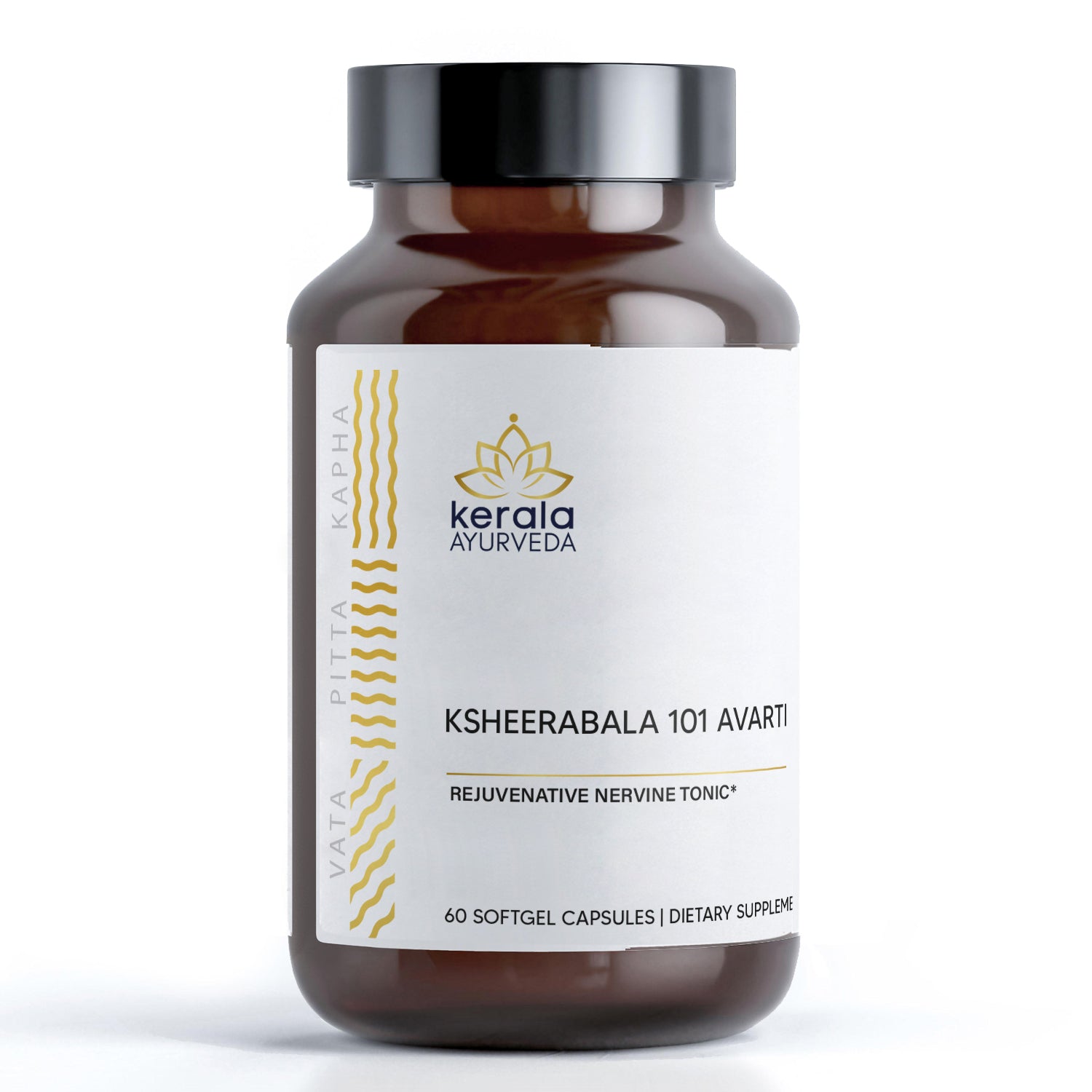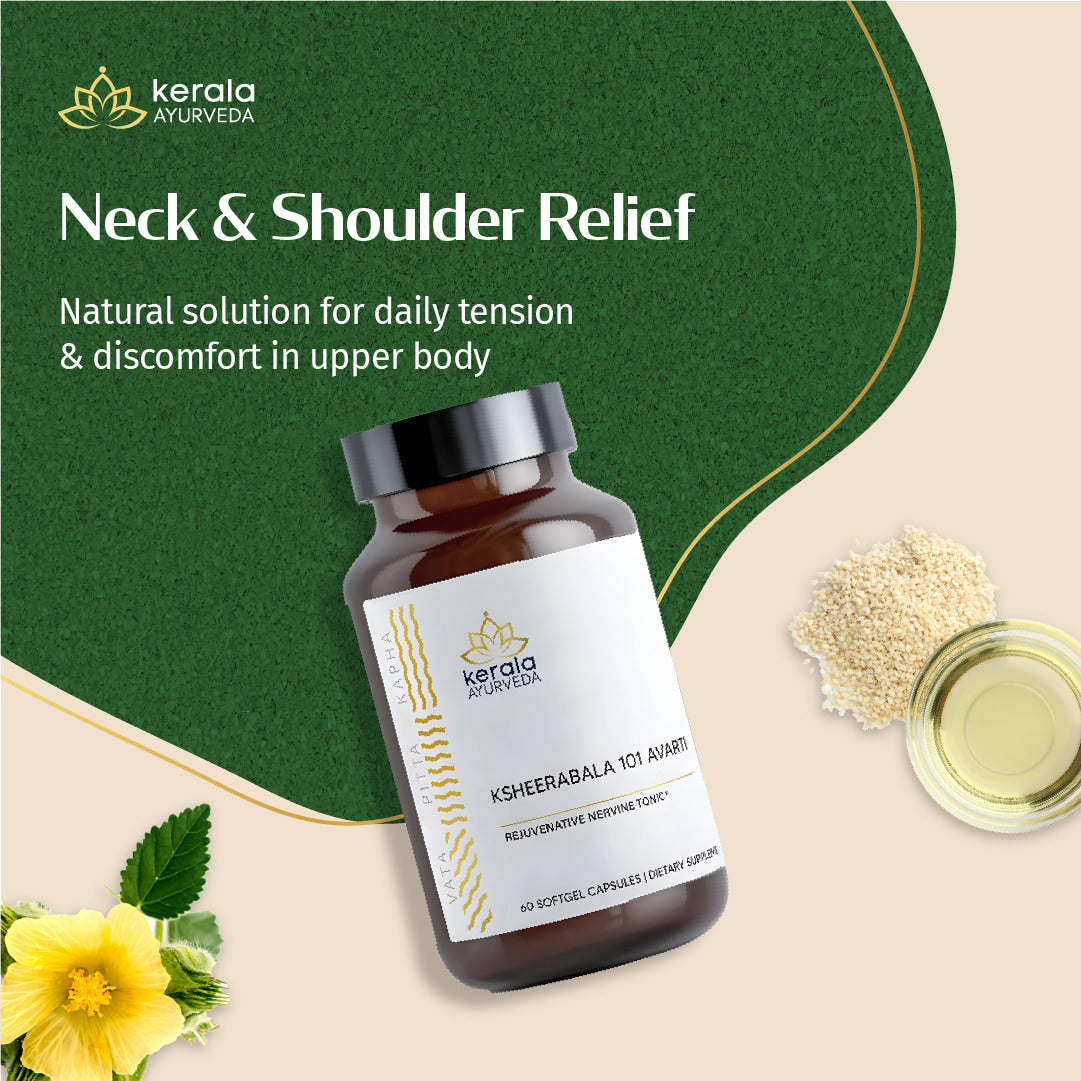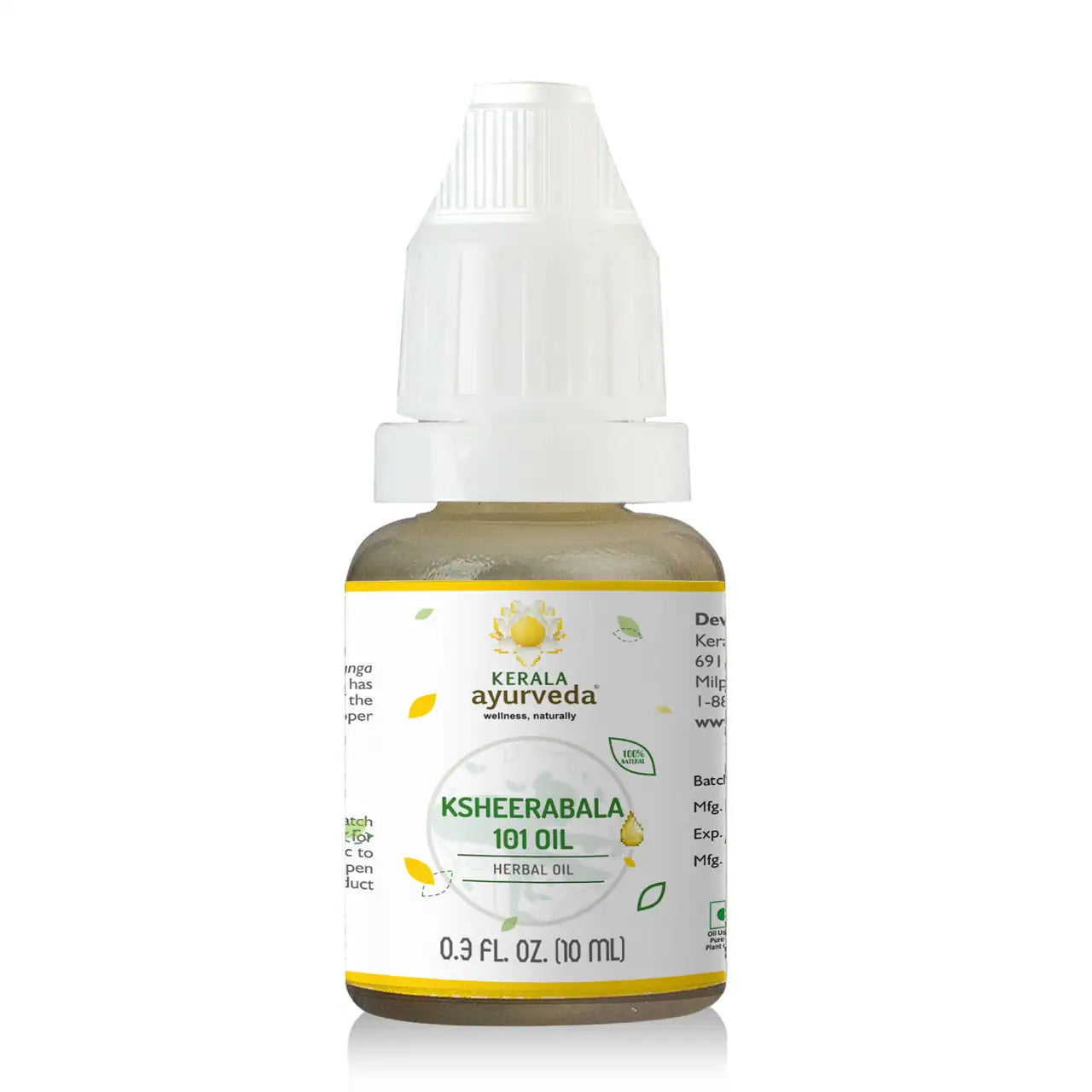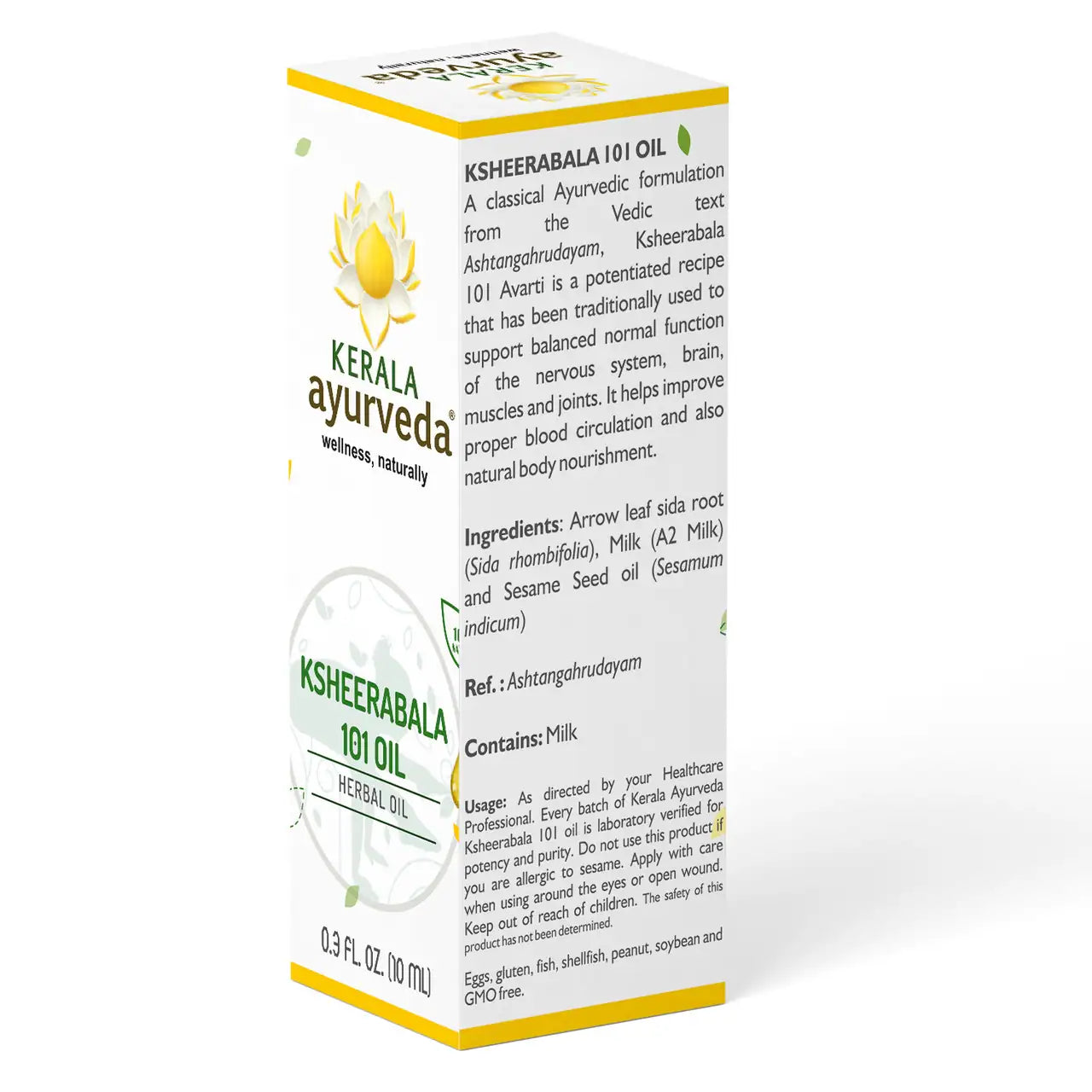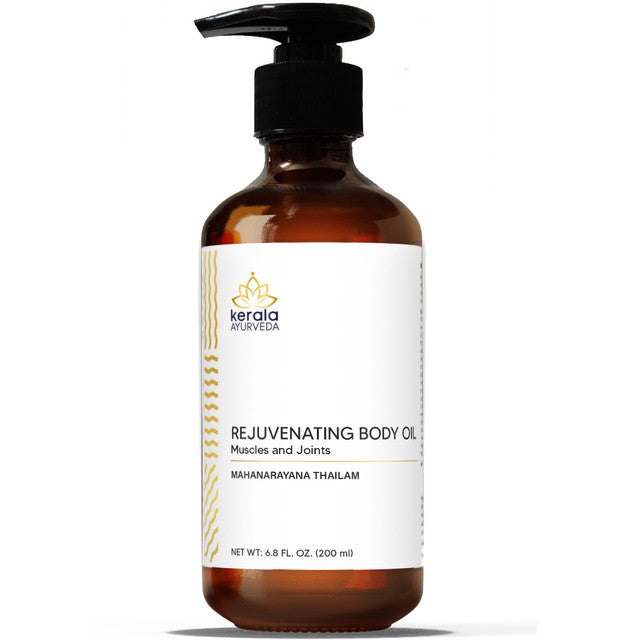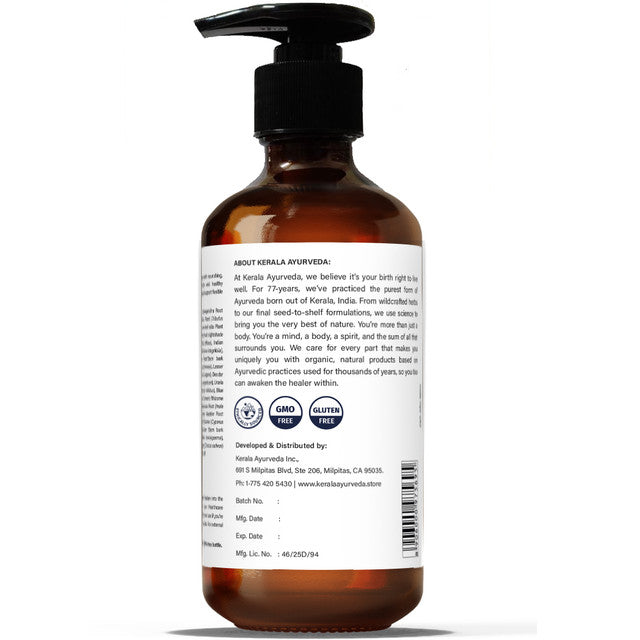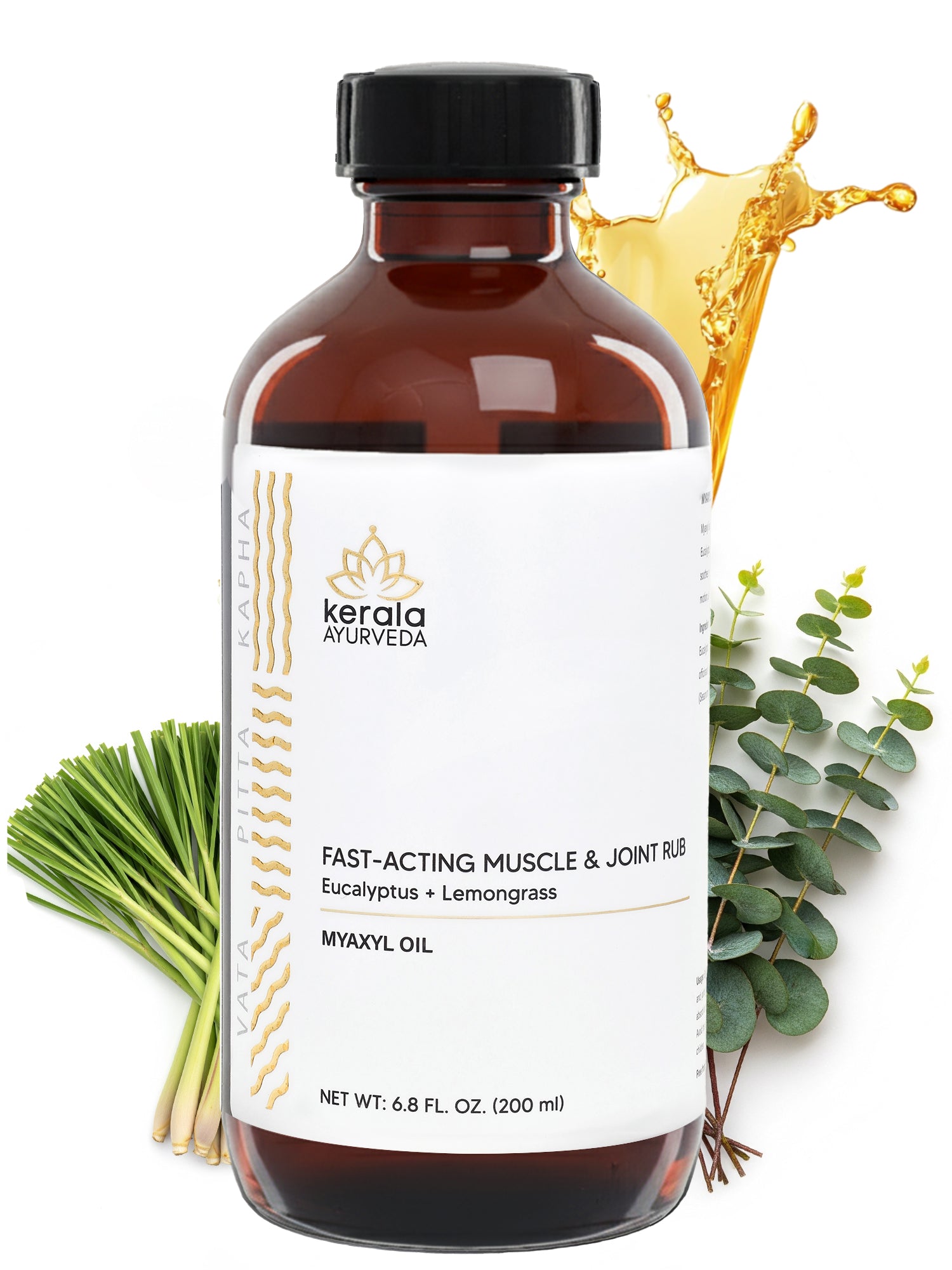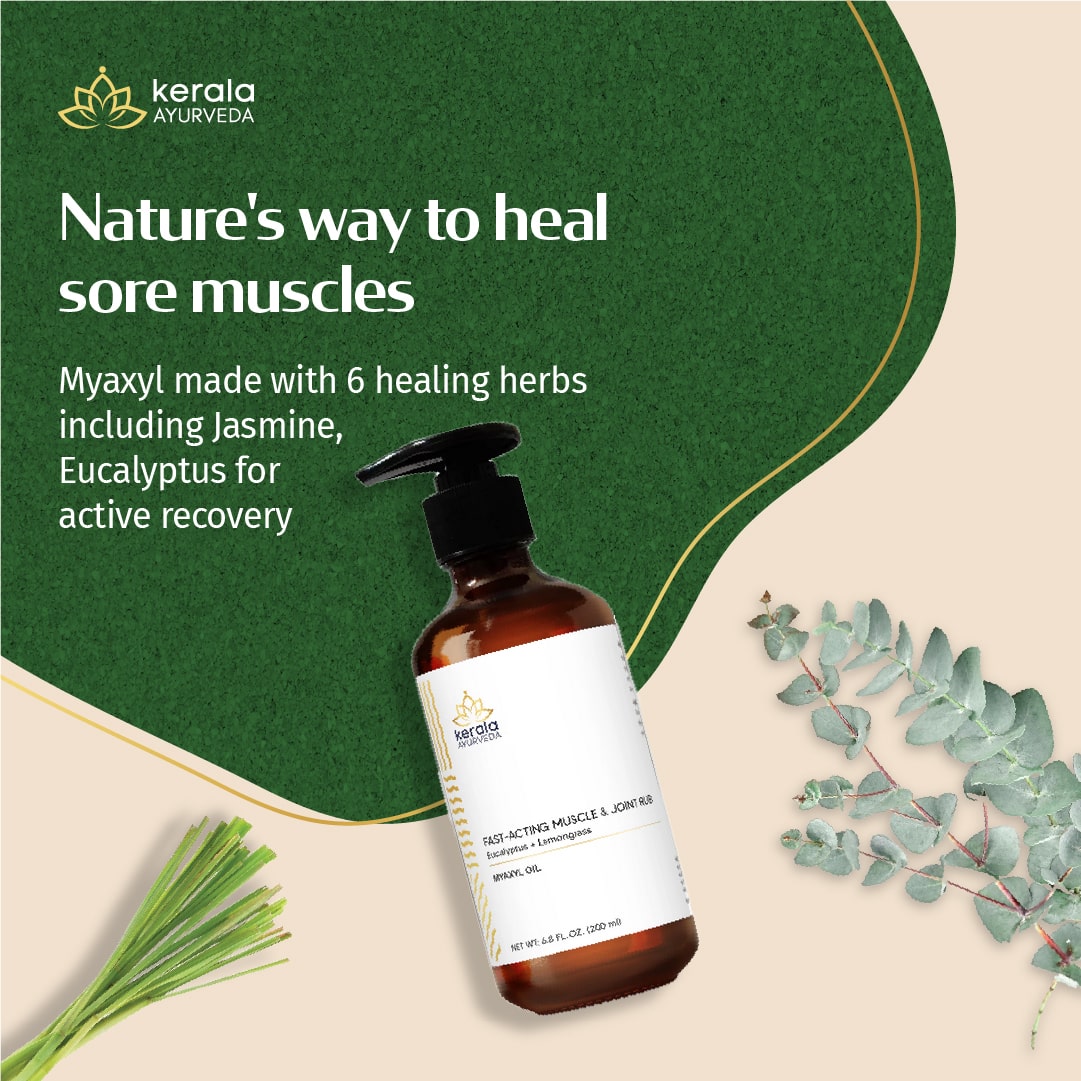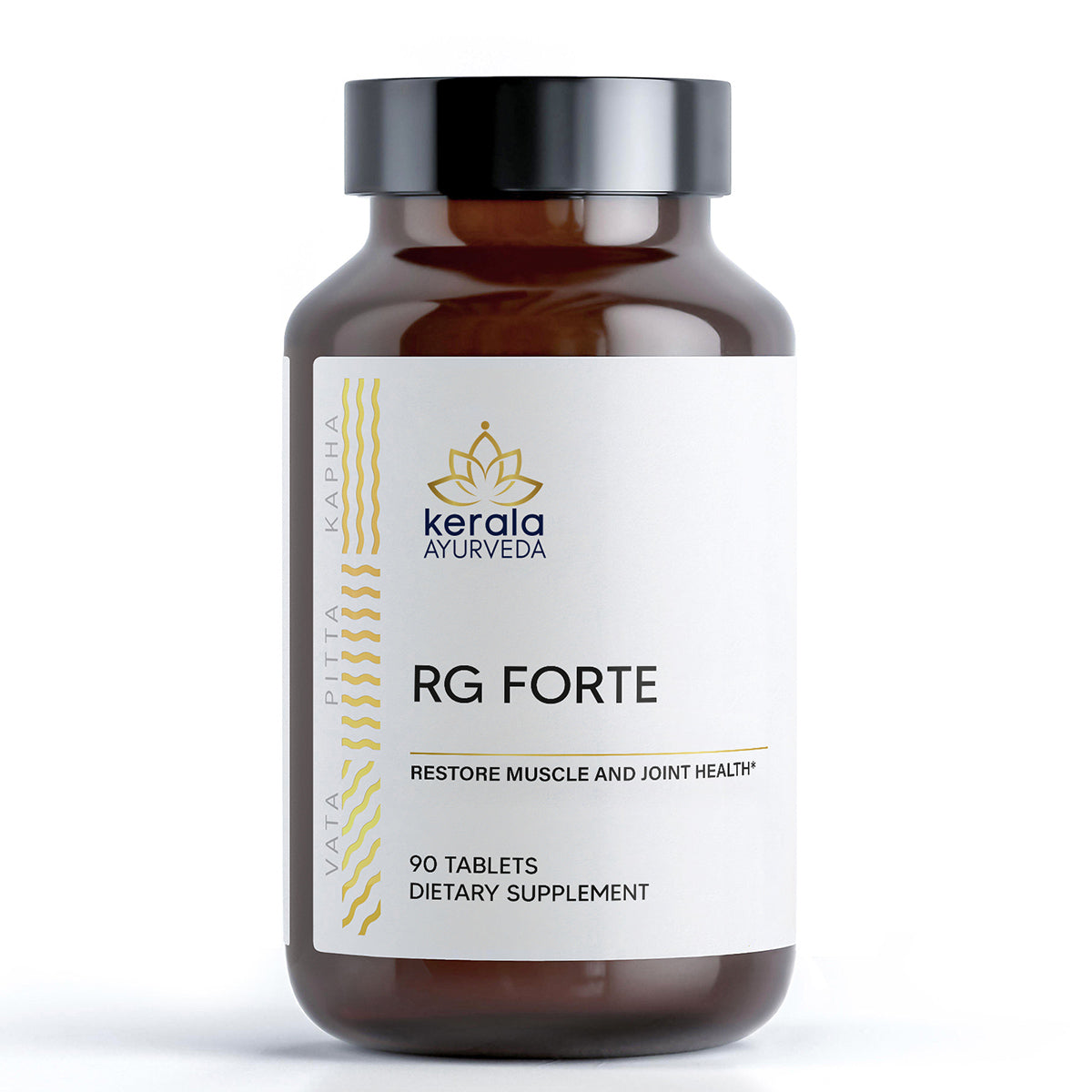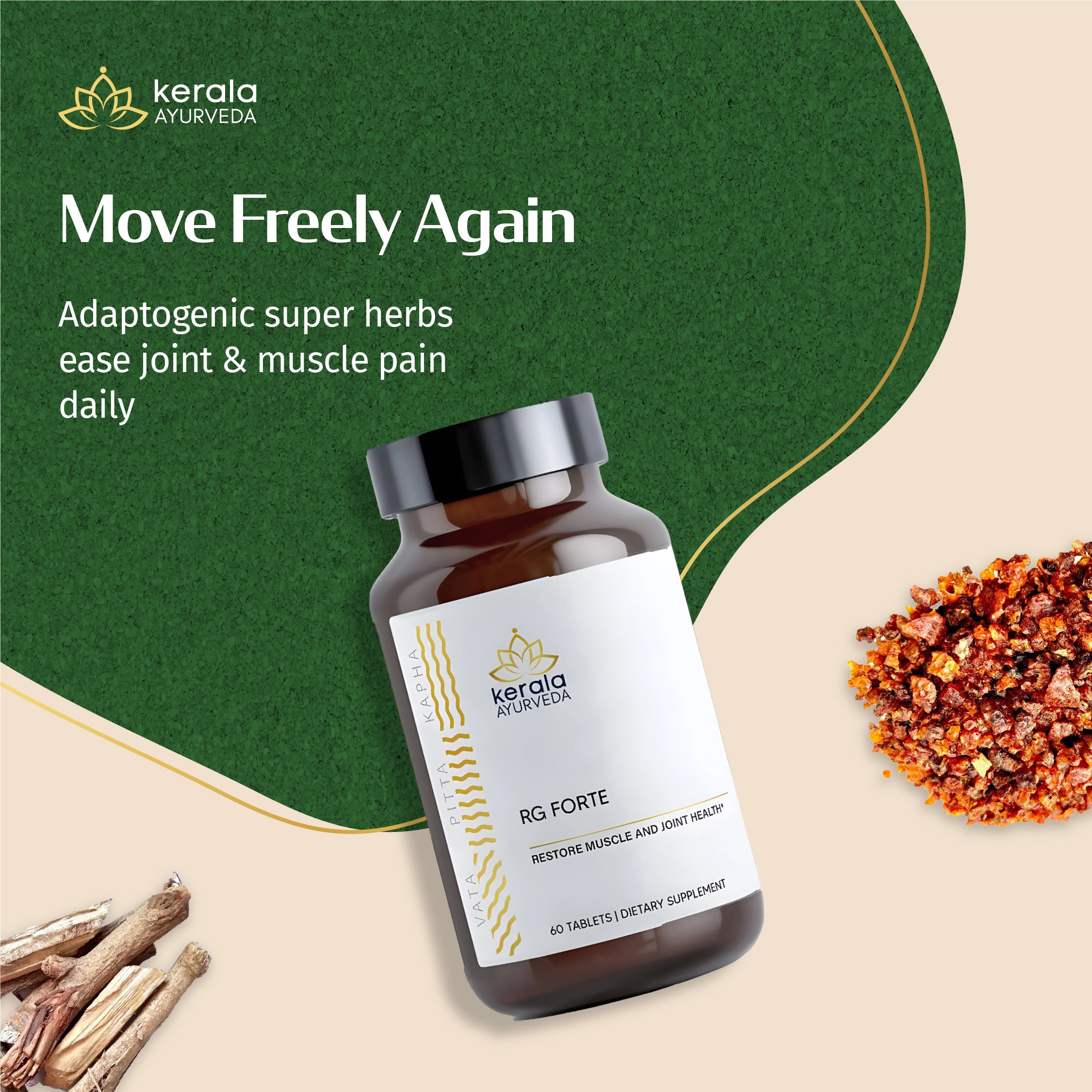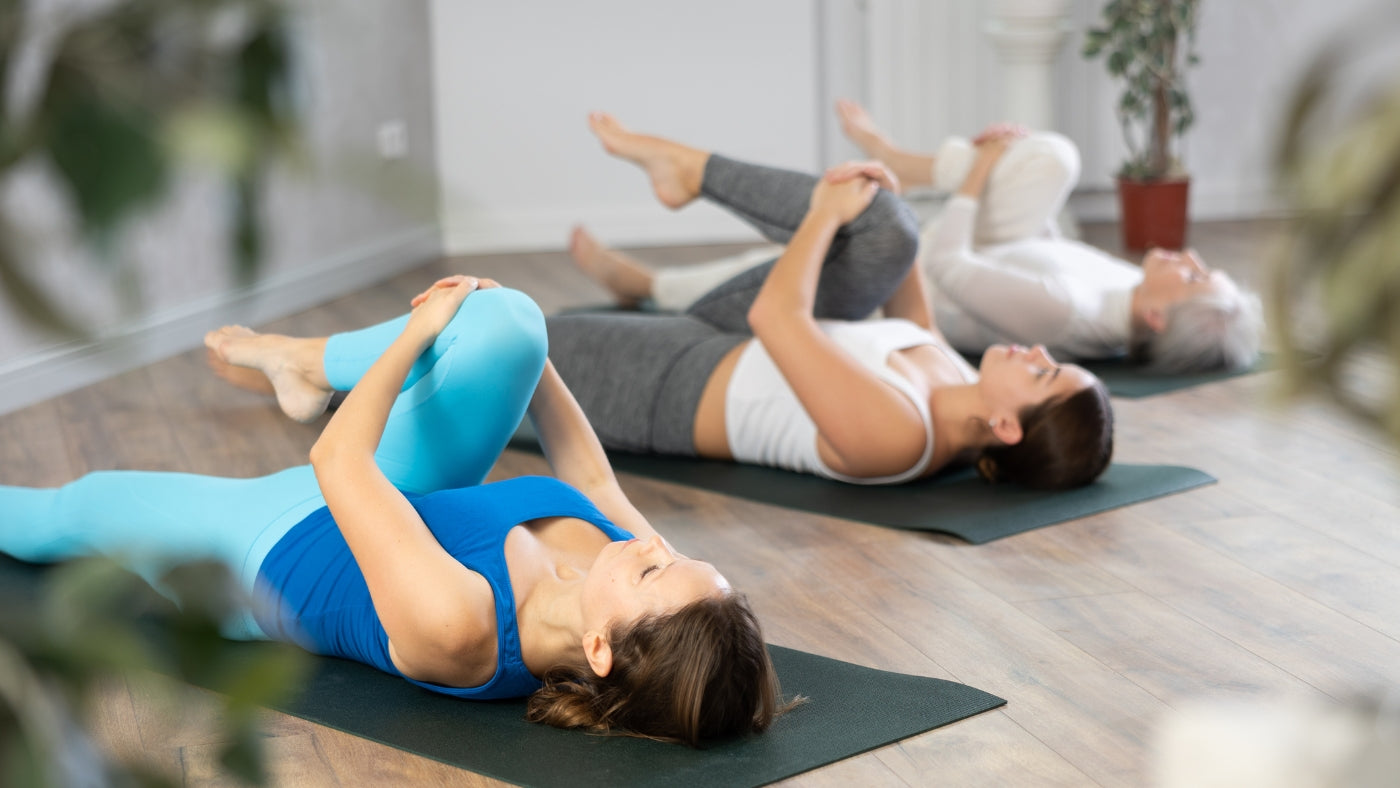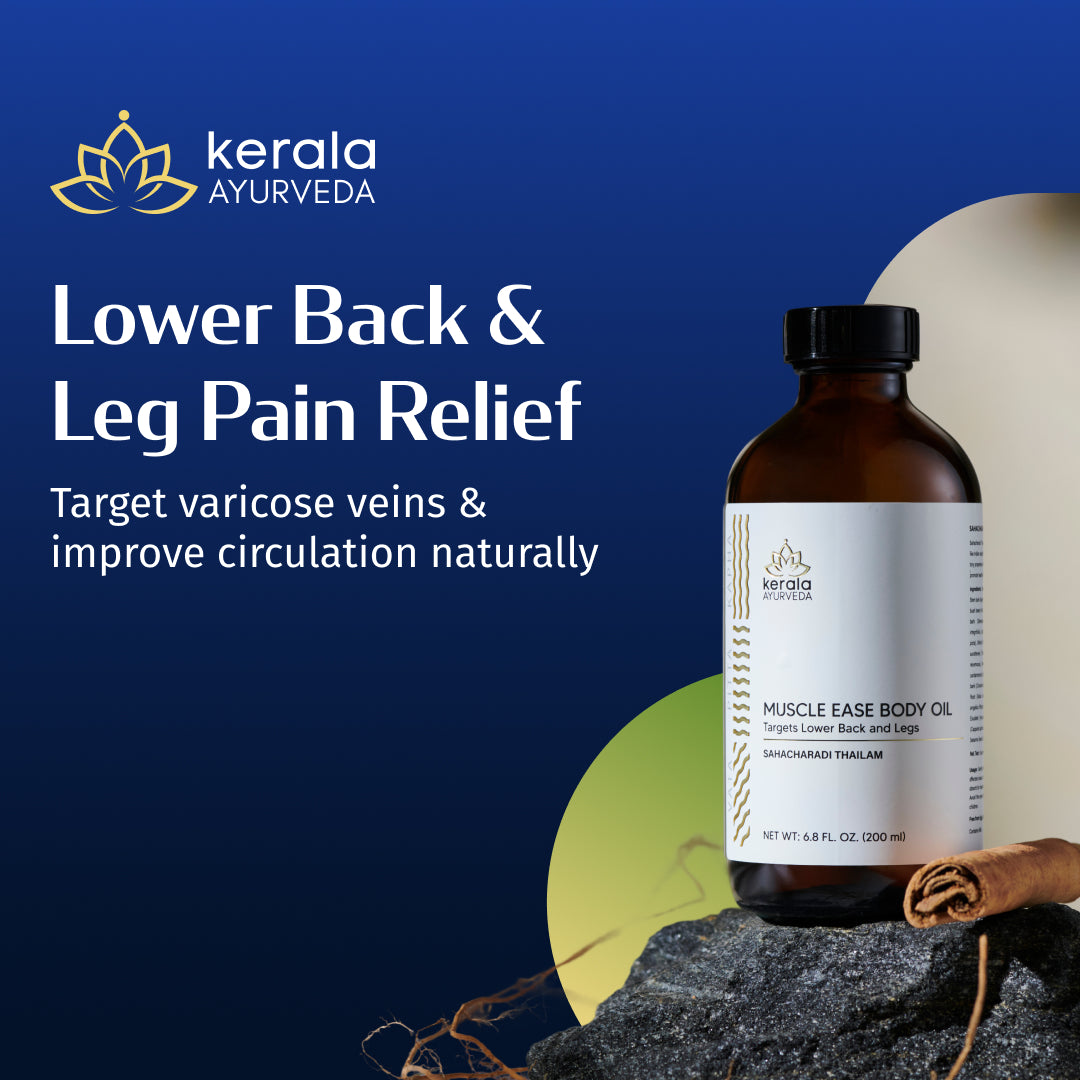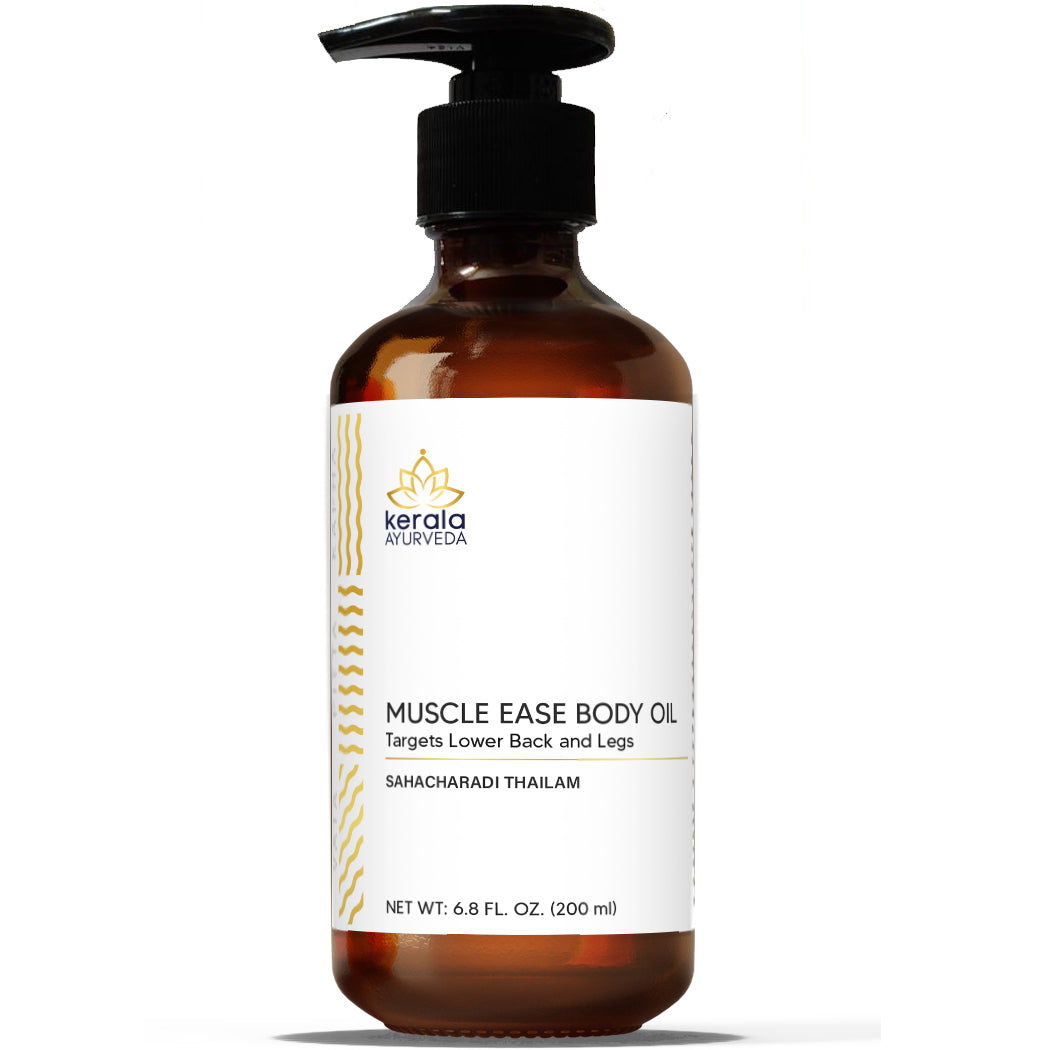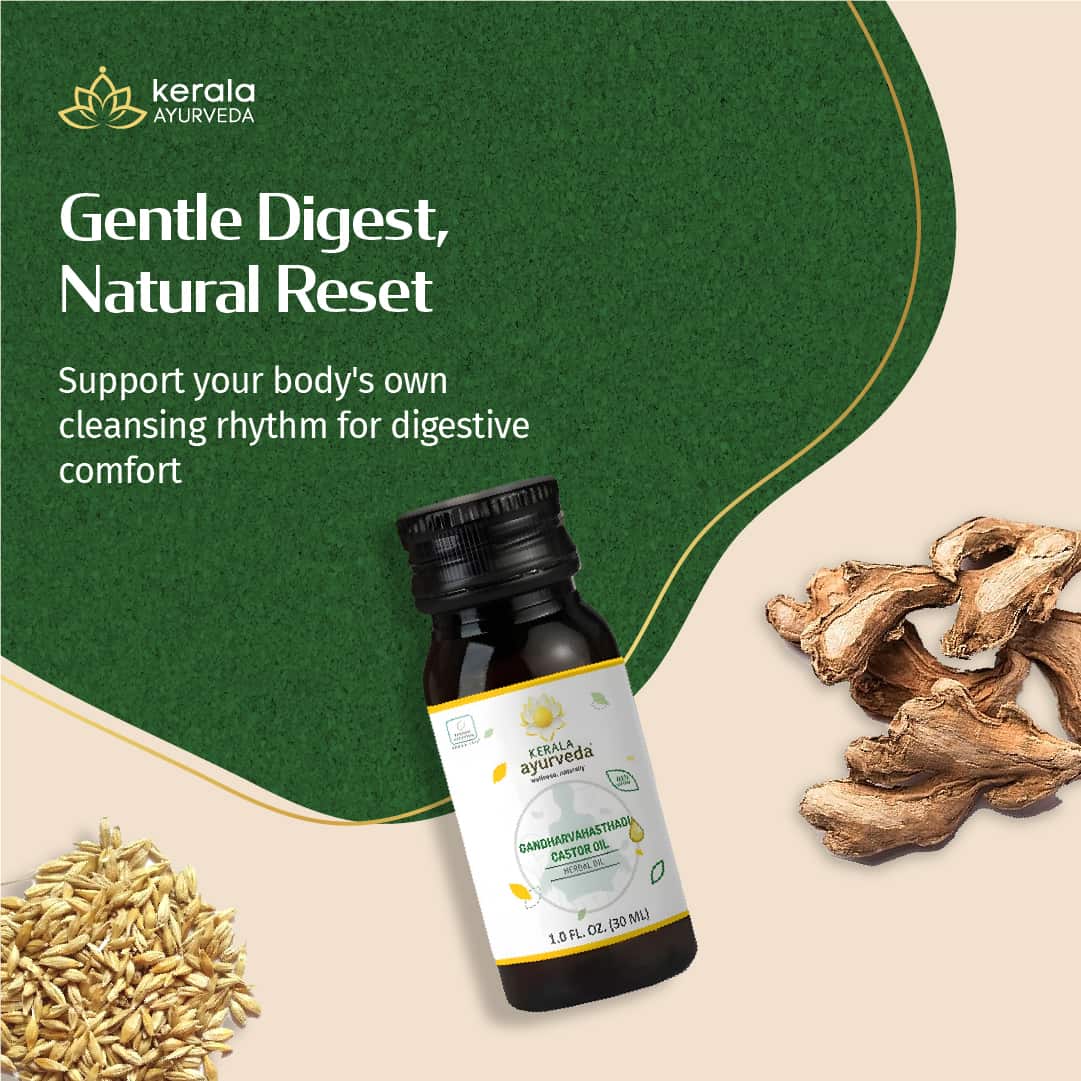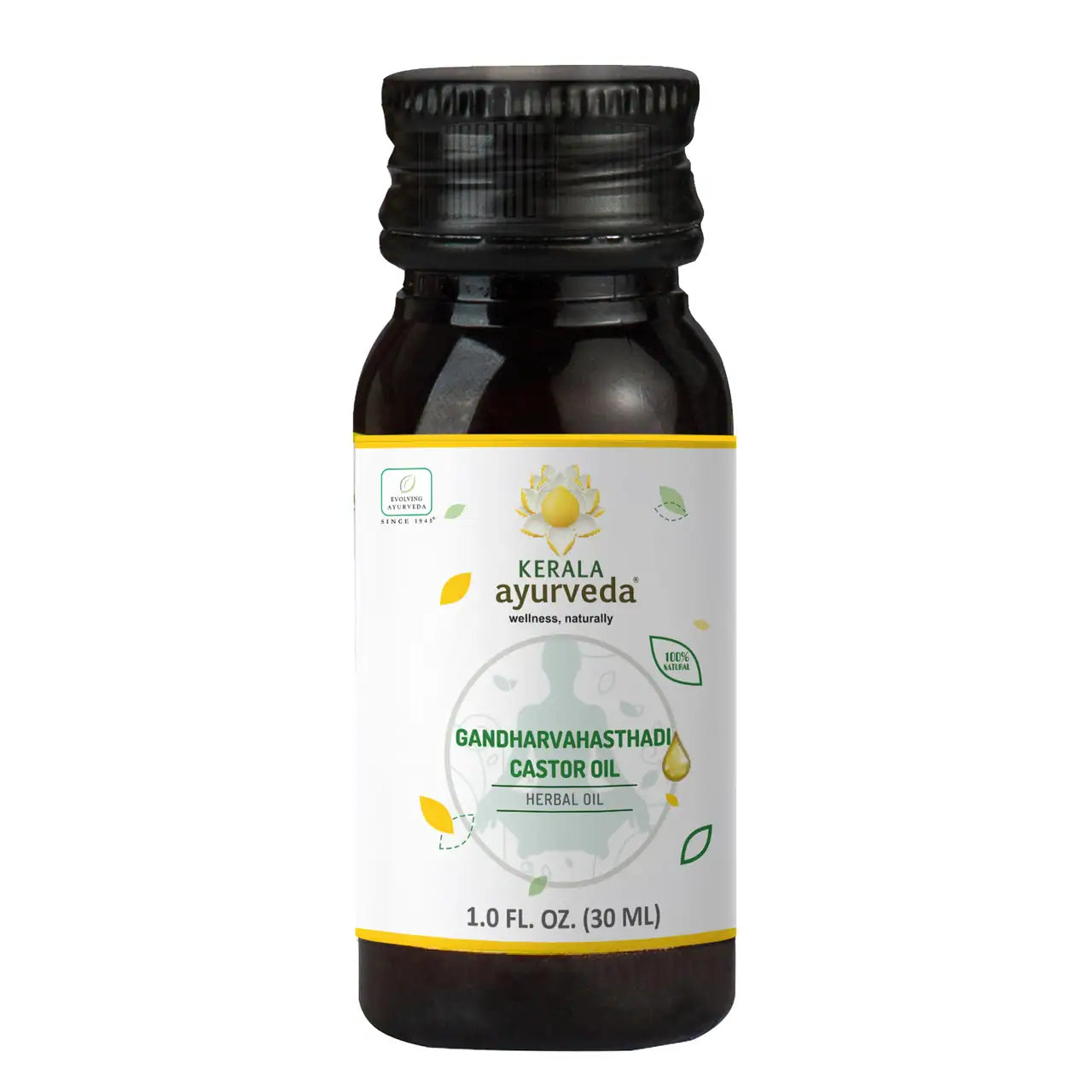Highlights
Sciatica is a common condition involving radiating pain along the sciatic nerve pathway from the lower back through the lower leg. In Ayurveda, this condition is known as Gridhrasi, a term derived from the Sanskrit word "gridhra" meaning vulture. The name references the distinctive limping gait of those suffering from this condition, which resembles the walking pattern of a vulture due to the severe radiating pain and stiffness.
Understanding the Pathogenesis of Gridhrasi

According to Ayurvedic texts, the samprapti (pathogenesis) of Gridhrasi fundamentally involves vitiation of Vata (Air energy), the dosha governing movement and the nervous system. The condition develops through several stages and can be more prevalent during the Fall season which is the Vata time of year.
The initial causes include:
- Consumption of dry, cold, or astringent foods which cause dryness
- Sedentary lifestyle or conversely overexertion and heavy lifting
- Poor posture and excessive vehicle use
- Suppressing natural urges such as passing gas or stool
The aggravated Vata dosha travels downward and becomes lodged in the hip joint, lower back and nerve pathways of the legs. This blockage of nerve channels causes intense pain and symptoms along the sciatic nerve pathway.
Ayurveda identifies two main types
Vataja Gridhrasi involves sole vitiation of Vata dosha, presenting with:
- Intense pulsating sciatic pain
- Pricking sensations without heaviness
Vata Kaphaja Gridhrasi involves combined vitiation of both Vata and Kapha (Water energy), presenting with:
- Less intense radiating sciatic pain
- Feeling of heaviness and difficulty lifting leg
- Drowsiness
The characteristic manifestations include:
- Sharp, shooting sensations radiating from buttocks down the back of the leg to the foot
- Rigidity and restricted mobility
- Numbness and tingling along the nerve pathway
Known Causes Through Diet, Lifestyle, and Physical Factors

Ayurveda recognizes that Gridhrasi develops through multiple causative factors:
Dietary Factors
- Excessive consumption of dry, rough foods (Ruksha ahara)
- Cold foods and beverages
- Foods with bitter (Tikta) and astringent (Kashaya) tastes in excess
- Insufficient intake of healthy fats and oils
- Irregular meal timings
Lifestyle Factors
- Sedentary occupation with prolonged sitting
- Excessive physical exertion without adequate rest
- Suppressing natural urges including urination, defecation, and flatulence
- Irregular sleep patterns and insufficient rest
- Excessive travel, particularly in vehicles causing jerky movements
Physical Factors and Injuries
- Improper lifting techniques causing strain on the lumbar region
- Sudden twisting movements of the spine
- Previous trauma or injury to the lumbosacral area
- Age related degeneration
- Chronic constipation causing excess pressure in the colon, the primary site of Vata
Modern Contributing Factors
- Prolonged desk work and computer use with poor ergonomics
- Psychological stress placing excessive strain on the spinal column
- Obesity increasing mechanical stress on the spine
- Muscle weakness in the core and lower back
Dietary Correction for Managing Gridhrasi

Proper diet plays a crucial role in pacifying aggravated Vata dosha and supporting healing.
Foods to Include:
- Warm, freshly cooked meals as Vata is pacified by warmth
- Healthy fats: ghee, sesame oil, and olive oil help balance dryness
- Sweet, sour, and salty tastes in moderation to balance Vata
- Vata pacifying spices: ginger, black pepper, cumin, fennel, ajwain, and hing
- Whole grains: rice, wheat, barley and oats
- Cooked vegetables: sweet potato, carrots, beets, and winter squash
- Well cooked legumes, especially mung dal
- Nuts and seeds: soaked and peeled almonds, sesame seeds
- Warm milk with turmeric and black pepper before bed
Vata Aggravating Cold Dry Foods to Avoid:
- Cold, frozen, and refrigerated foods which aggravate Vata
- Raw vegetables and salads, especially during cooler months
- Dry, light, and rough foods: crackers, chips, and popcorn
- Excessive bitter and astringent tastes
- Stimulants: coffee and black tea
- Refined sugar and processed foods
- Nightshade vegetables: tomatoes, eggplant, and bell peppers if inflammation is present
Additional Dietary Guidelines:
- Maintain regular meal times, with the largest meal at midday when digestive strength is highest
- Stay adequately hydrated with warm water throughout the day
- Maintain regular daily bowel movements
Lifestyle and Physical Corrections

Postural Awareness and Ergonomics:
- Maintain proper spinal alignment while sitting, standing, and walking
- Use ergonomic chairs with lumbar support for desk work
- Take regular breaks every 30 to 45 minutes to stand and stretch
- Avoid prolonged sitting or standing in one position
- Practice proper lifting techniques, bending at knees rather than waist
Gentle Movement and Exercise:
- Gentle yoga asanas
- Bhujangasana (Cobra pose)
- Shalabhasana (Locust pose)
- Paschimottanasana (Seated Forward Bend) when pain subsides
- Pawanmuktasana (Wind Relieving pose)
- Regular walking, preferably in nature and during daylight hours
- Avoid high impact activities, heavy lifting, and sudden twisting movements
Maintain Regular Daily Routine (Dinacharya):
- Rise early, ideally before sunrise
- Establish regular sleep patterns, aiming for 7 to 8 hours nightly
- Create consistent meal times
- Stress management through meditation or pranayama (breathing exercises)
- Avoid suppression of natural urges (bowel movements, hunger, etc)
Stress Management:
- Practice Nadi Shodhana (alternate nostril breathing) and Bhramari (humming bee breath)
- Engage in regular meditation practice
- Maintain supportive social connections
- Practice gentle abhyanga (self massage with warm oil) before bathing
Ayurvedic Herbal Products for Gridhrasi
Rasnasapthakam Kwath Tablets

Traditional Ayurvedic Formula for Vata Balance and Nerve Comfort
Rasnasapthakam Kwath is a Ayurvedic decoction tablet containing seven potent herbs specifically formulated to address Vata disorders affecting the musculoskeletal and nervous systems. This time-honored formula features Rasna (Pluchea lanceolata) as the primary ingredient, renowned in Ayurvedic texts for its affinity to nerve tissue and its ability to pacify aggravated Vata dosha.
Key Benefits:
- Supports healthy nerve function and comfort
- Helps maintain flexibility and ease of movement in the lower back and legs
- Balances Vata dosha, the primary factor in sciatic discomfort
- Supports the body's natural inflammatory response
- Promotes healthy circulation to affected areas
Traditional Uses: Ayurvedic texts recommend Rasnasapthakam Kwath for Gridhrasi (sciatica), lower back concerns, stiffness in joints, and Vata imbalances affecting the extremities. The synergistic blend of seven herbs works to nourish nerve tissue while removing blockages in the channels (srotas) that carry vital energy and nutrients.
Shop Rasnasapthakam Kwath: https://keralaayurveda.store/products/rasnasapthakam-kwath-90-tablets
Muscle Ease Body Oil (Sahacharadi Thailam)

Warming Medicated Oil for External Massage and Vata Pacification
Sahacharadi Thailam is a traditional Ayurvedic herbal oil specifically formulated to address Vata disorders manifesting as stiffness, discomfort, and restricted movement in the lower back, hips, and legs. This time-tested herbal formulation combines potent Vata-pacifying herbs processed in a sesame oil base, creating a warming, deeply penetrating oil ideal for external massage (Abhyanga).
Key Benefits:
Provides soothing warmth to areas of discomfort
Supports healthy muscle function and flexibility
Nourishes nerve tissue through external application
Helps maintain ease of movement in the lumbar region and lower extremities
Balances Vata dosha when applied with gentle massage
Traditional Uses: Ayurvedic texts recommend Sahacharadi Thailam for external application to support Gridhrasi (sciatica), lower back pain and stiffness, and Vata imbalances affecting mobility. The oil's unique property of Gati Viseshatvam (specific movement-supporting action) makes it particularly effective for conditions involving restricted movement and nerve discomfort.
Suggested Use: Warm the oil slightly and massage gently into affected areas, particularly the lower back, hips, and legs. For best results, apply before bathing and allow the oil to penetrate for 15 to 20 minutes. Can be used daily or as recommended by your Ayurvedic practitioner. Follow with a warm water bath to enhance absorption.
Shop Sahacharadi Thailam: https://keralaayurveda.store/products/muscle-ease-body-oil-sahacharadi-thailam?variant=50896648372408
Gandharvahasthadi Castor Oil
Gentle Digestive Support for Vata Balance
Gandharvahasthadi Eranda Taila is a Ayurvedic formulation combining the benefits of castor oil (Eranda) with complementary herbs to support healthy digestion and regular elimination. This gentle yet effective formula addresses one of the root causes of Vata aggravation, constipation, which according to Ayurvedic wisdom can contribute to discomfort in the lower back and sciatic nerve pathway.
Key Benefits:
- Supports healthy, regular bowel movements
- Pacifies excess Vata dosha in the colon, the primary site of Vata
- Promotes gentle, natural elimination without harsh effects
- Helps reduce pressure on the lumbar region caused by irregular elimination
- Contains unctuous properties that lubricate and nourish tissues
Traditional Uses: Ayurvedic texts recognize the connection between digestive health and Vata disorders affecting the lower body. Gandharvahasthadi Castor Oil is recommended as a mild purgative that supports the natural elimination process while simultaneously pacifying Vata. Regular, healthy elimination reduces excess pressure in the pelvic region and helps maintain balance in the doshas.
Suggested Use: Take 3 - 5 drops mixed with warm milk or water before bed, or as directed by your Ayurvedic practitioner. Start with a smaller dose to assess individual response. Best taken on an empty stomach in the evening for gentle morning elimination.
Important Note: This product supports natural elimination and should be used as part of a holistic approach to Vata balance. Consult with an Ayurvedic practitioner for personalized guidance, especially if taking other supplements or herbs.
Shop Gandharvahasthadi Castor Oil: https://keralaayurveda.store/products/gandharvahasthadi-castor-oil-1-fl-oz-30-ml
Home Selfcare

- Castor oil: Consume five drops mixed with warm milk before bed to relieve constipation
- Warm oil massage: Apply herbal oil followed by warm/hot water bath
-
Padabhyangam (Ayurvedic foot massage): Apply warm herbal oil daily, as this important preventative therapy stimulates vital marma points in the feet that correspond to the entire body and specifically helps prevent Vata disorders affecting the lower extremities. Regular foot massage with warm sesame oil before bed can significantly reduce the recurrence of sciatic pain.
Panchakarma Therapy for Chronic Cases
For severe or chronic cases of Gridhrasi that do not respond adequately to dietary modifications, lifestyle changes, and herbal protocols, Ayurveda recommends Panchakarma (five purificatory actions). These specialized detoxification and rejuvenation therapies work at a deeper level to remove accumulated toxins (Ama) and restore balance to the doshas.
Panchakarma protocols for Gridhrasi typically include:
- Preparatory oleation (Snehana) and sudation (Swedana)
- Therapeutic enema (Basti Karma), considered the most effective therapy for Vata disorders
These intensive therapies require guidance by trained Panchakarma therapists in a specialized setting and are beyond the scope of self care measures. They represent an important therapeutic option when conservative approaches prove insufficient.
Embracing Natural Healing for Gridhrasi

Gridhrasi represents a significant Vata disorder that affects millions of individuals, causing considerable pain and limitation in daily activities. Ayurveda offers a comprehensive understanding of this condition through the lens of dosha imbalance, particularly Vata vitiation affecting the nerve channels and musculoskeletal structures of the lower back and legs.
The Ayurvedic approach emphasizes addressing root causes through dietary modifications that pacify Vata, lifestyle corrections that support proper posture and movement patterns, stress management, and therapeutic use of specific herbs and formulations. Simple home remedies including warm oil massage and regular Padabhyangam (warm oil foot massage) provide selfcare tools for prevention and management.
The holistic nature of Ayurvedic wisdom recognizes that true healing requires attention to physical, mental, and lifestyle factors. While mild to moderate cases often respond well to these conservative measures, chronic or severe manifestations may require specialized Panchakarma therapies administered under professional Ayurvedic guidance.
It is strongly recommended to enlist the guidance of a qualified Ayurvedic Vaidya (Ayurvedic physician) for proper assessment and individualized wellness protocol. Every person presents with unique constitutional factors, and personalized care ensures the most effective and safe approach.
For those seeking professional Ayurvedic consultation and authentic Panchakarma therapies, Kerala Ayurveda Wellness Center offers comprehensive services delivered by experienced practitioners trained in traditional methods.
Remember that prevention remains the best approach. Maintaining regular routines, practicing daily self care including Padabhyangam (Ayurvedic foot massage), eating Vata pacifying warm foods, and managing stress can significantly reduce the likelihood of developing or experiencing recurrence of Gridhrasi.

References
Classical Ayurvedic Texts
- Charaka Samhita, Chikitsa Sthana, Chapter 28 (Vatavyadhi Chikitsa), Verses 56, 57, 101
- Sushruta Samhita, Nidana Sthana, Chapter 1 (Vatavyadhi Nidana), Verse 74
- Ashtanga Hridaya, Chikitsa Sthana, Chapter 21 (Vatavyadhi Chikitsa)
- Madhava Nidana, Chapter 22 (Vatavyadhi Nidana)
- Chakradatta, Vatavyadhi Chikitsa, Chapter 22
Published Research Studies
- Mohan, M., & Sawarkar, P. (2019). Ayurvedic management of Gridhrasi with special respect to sciatica: A case report. Journal of Indian System of Medicine, 7(2), 131-138.
- De Silva, U.M.G.D., Bapat, V., Vedpathak, S.M., & Attanayake, A.M.H.S. (2022). Management of sciatica (Gridhrasi) through Ayurvedic interventions: A literary review. International Journal of Alternative and Complementary Medicine, 3(1), 10-16.
- Basnal, P., Borkar, P., Mandal, S., & Pal, P. (2025). Ayurvedic management of sciatica with medicated enema and bloodletting: A case report. Journal of Pharmacology and Pharmacotherapeutics, 16(3), 342-348.




